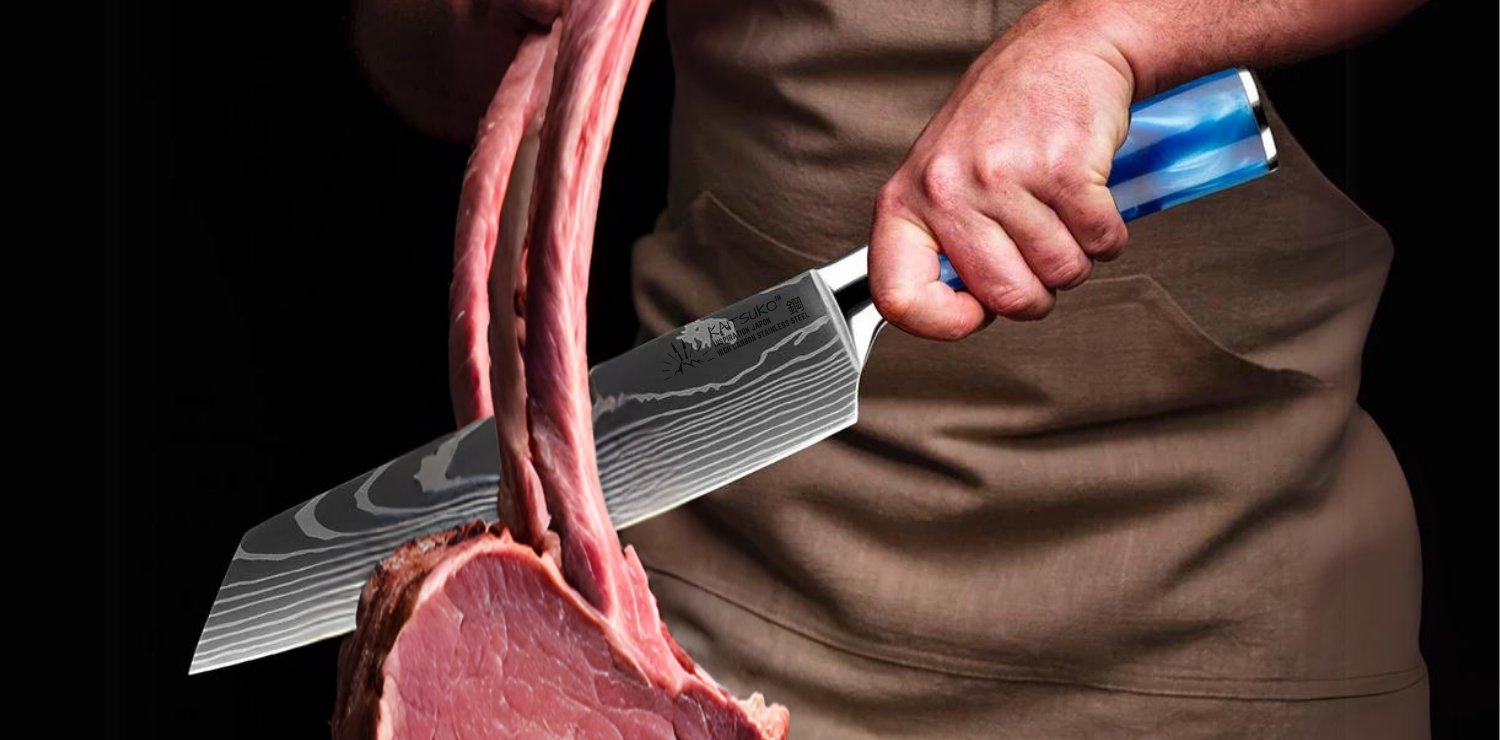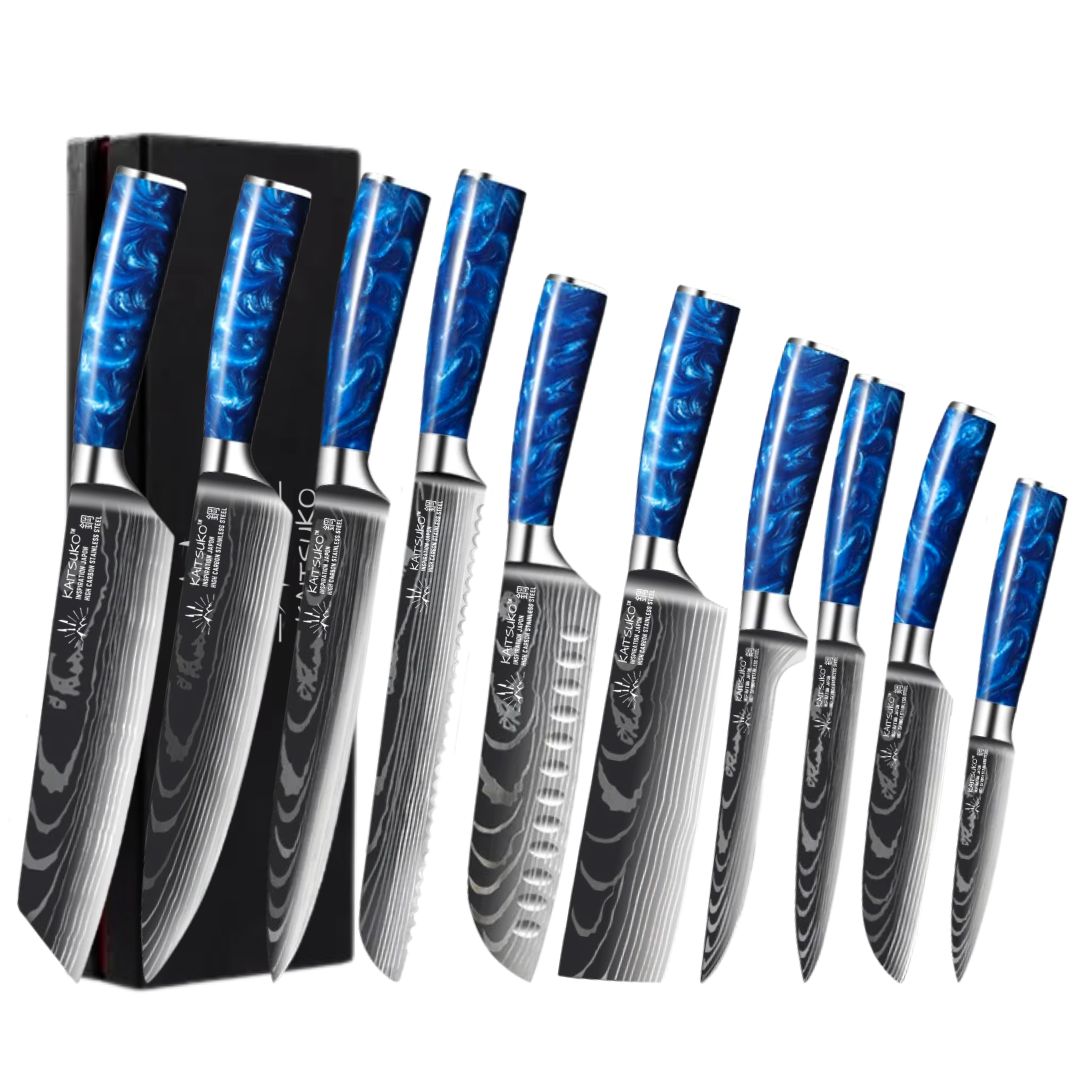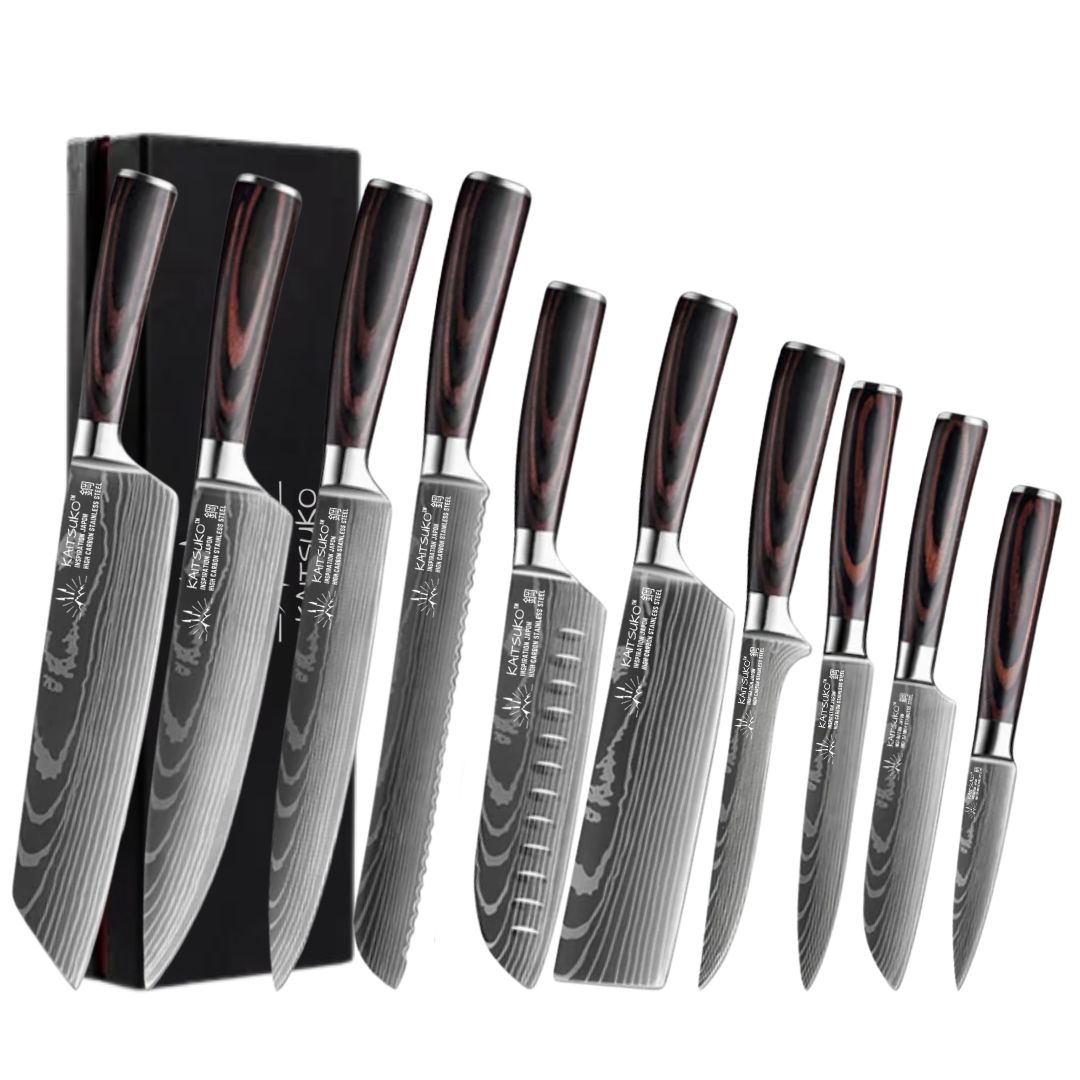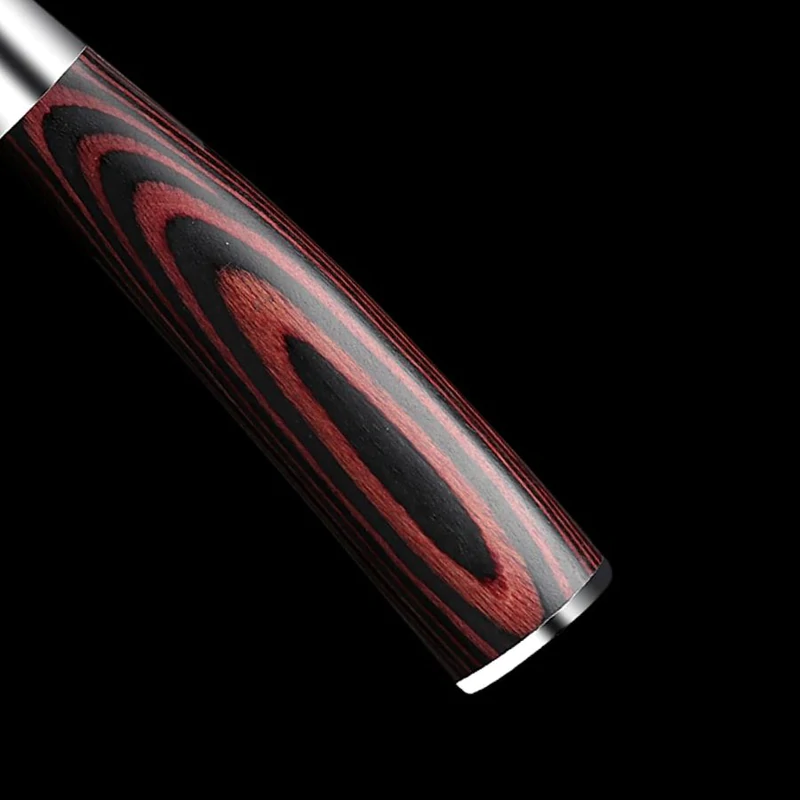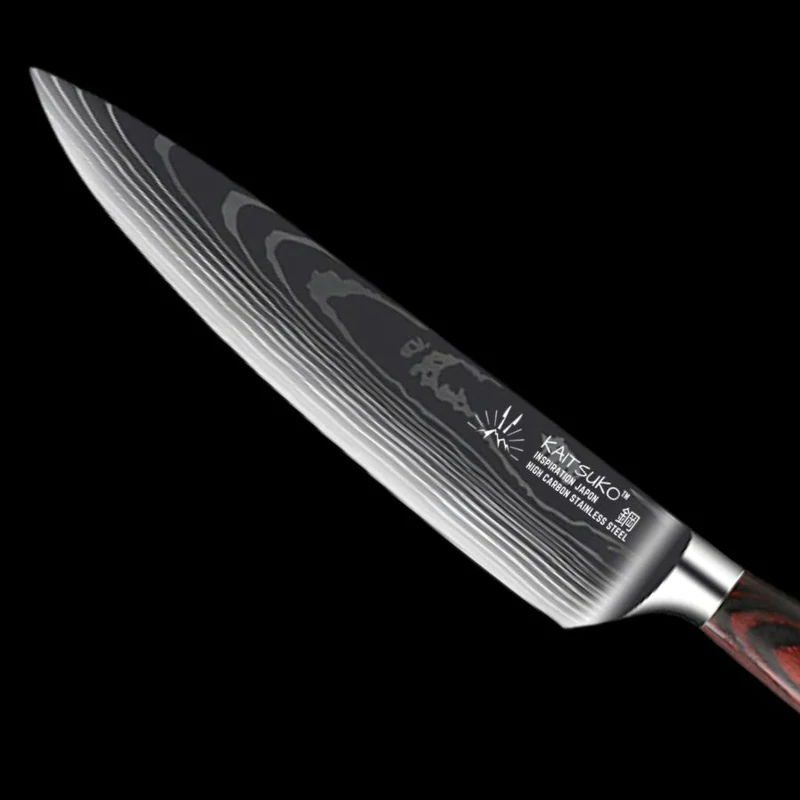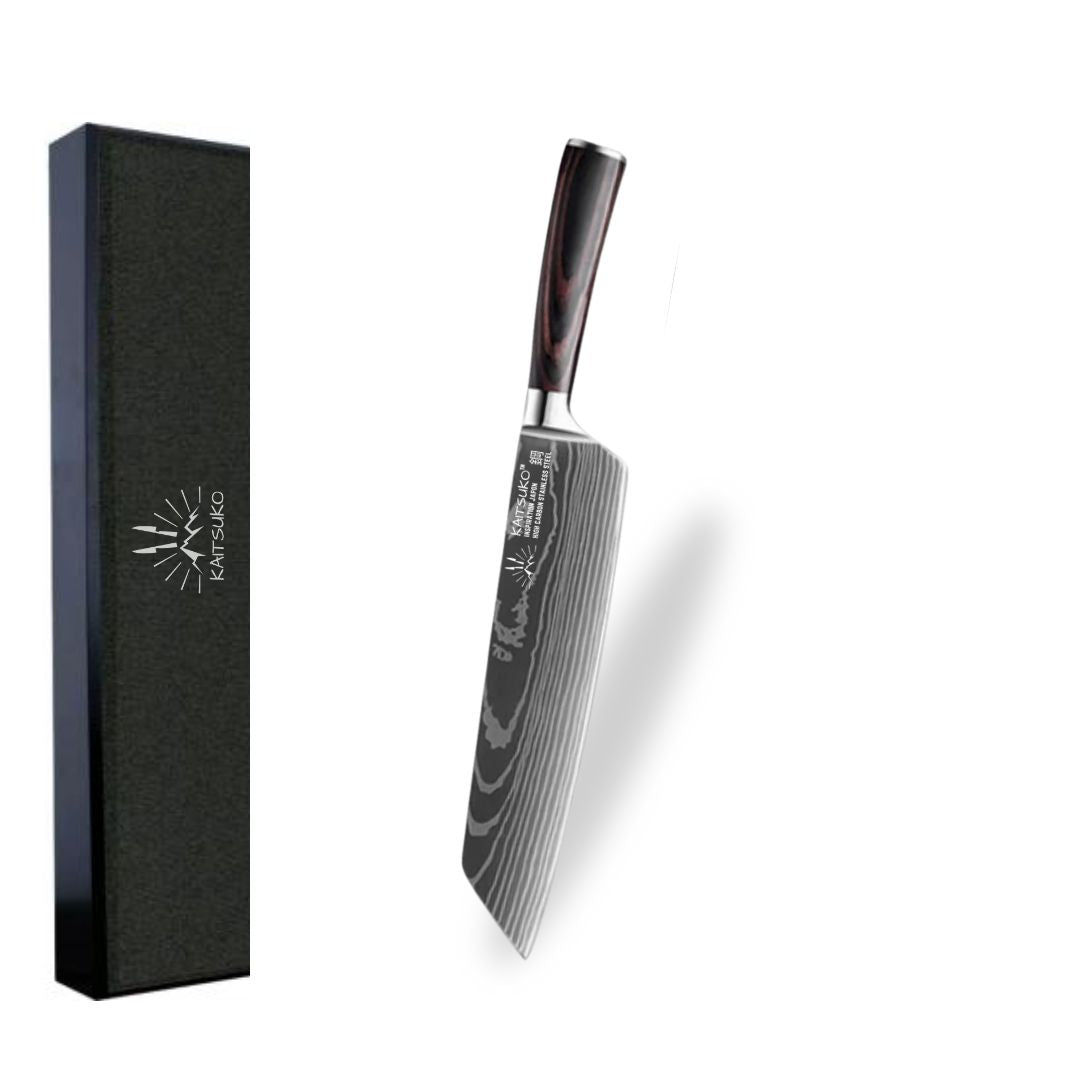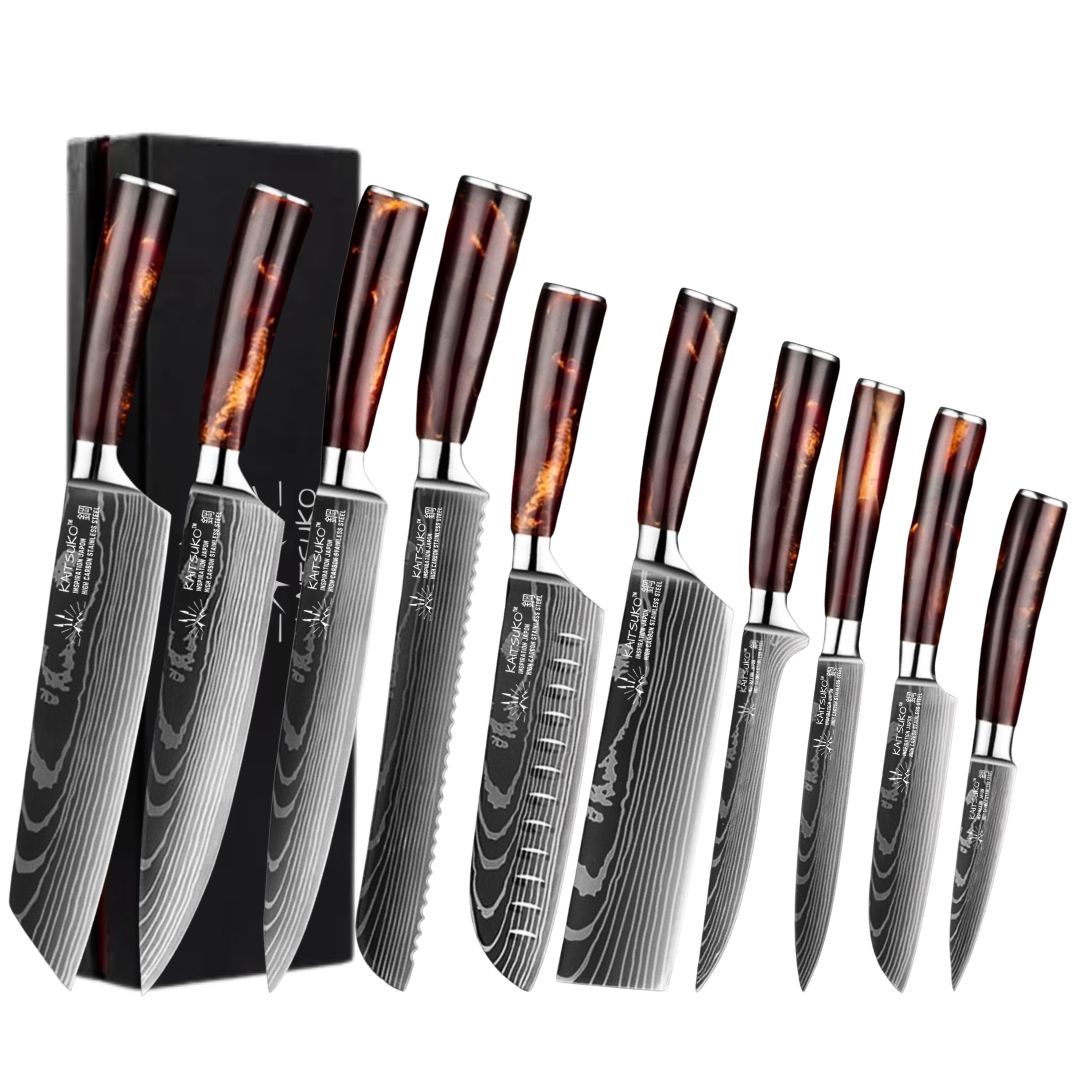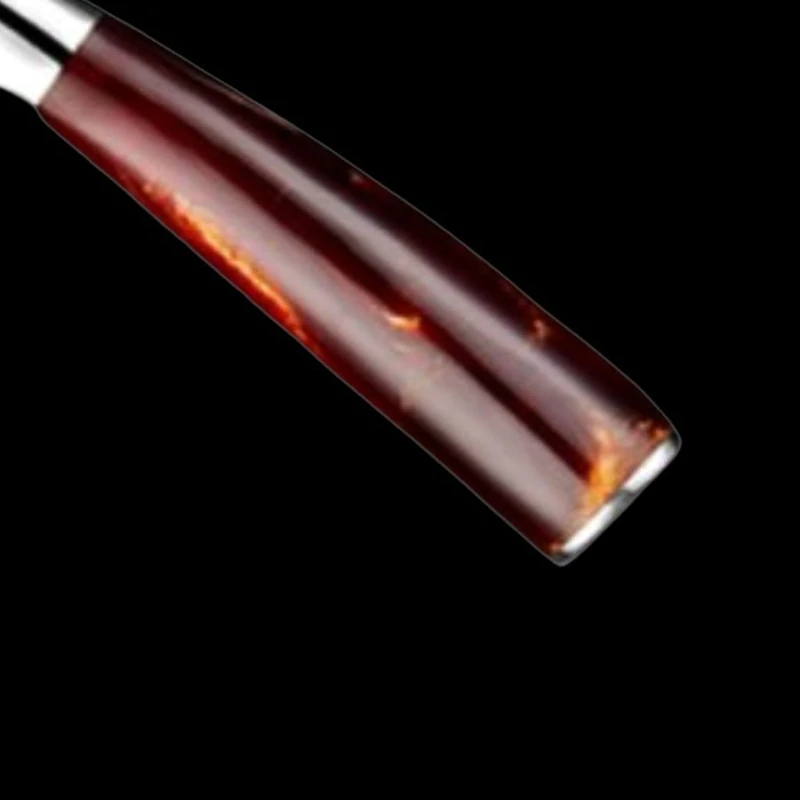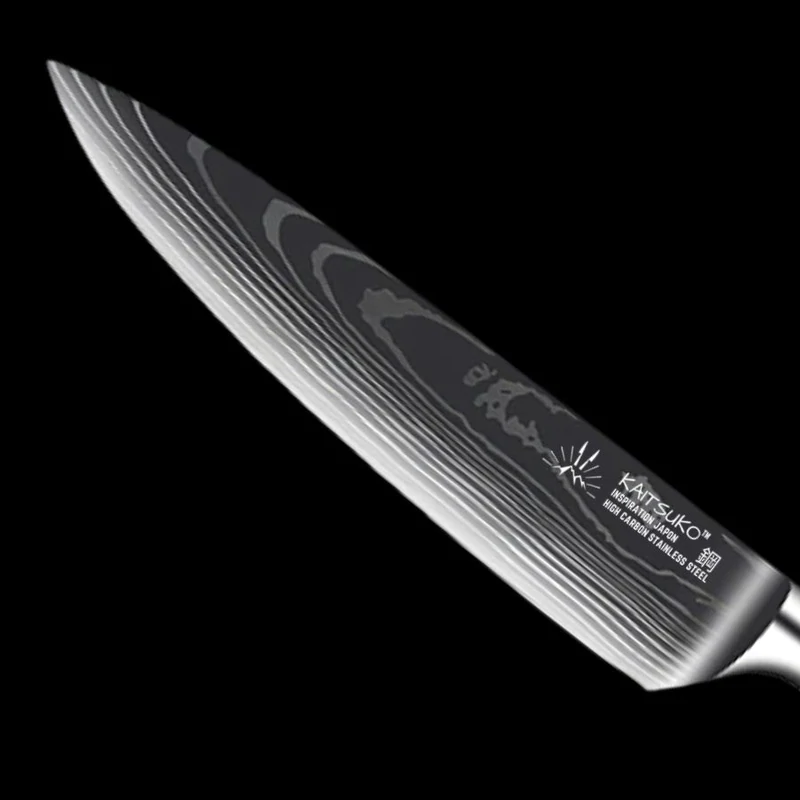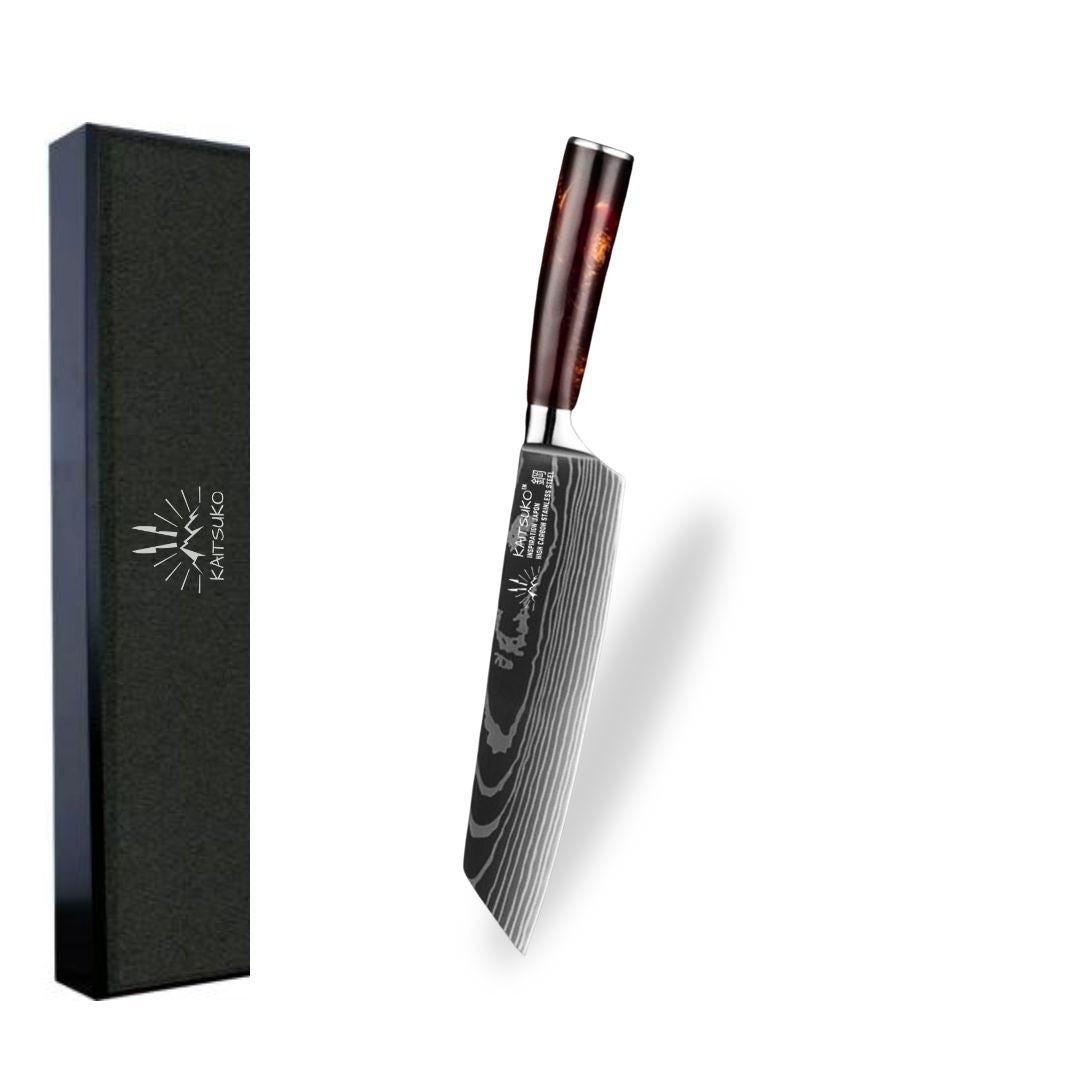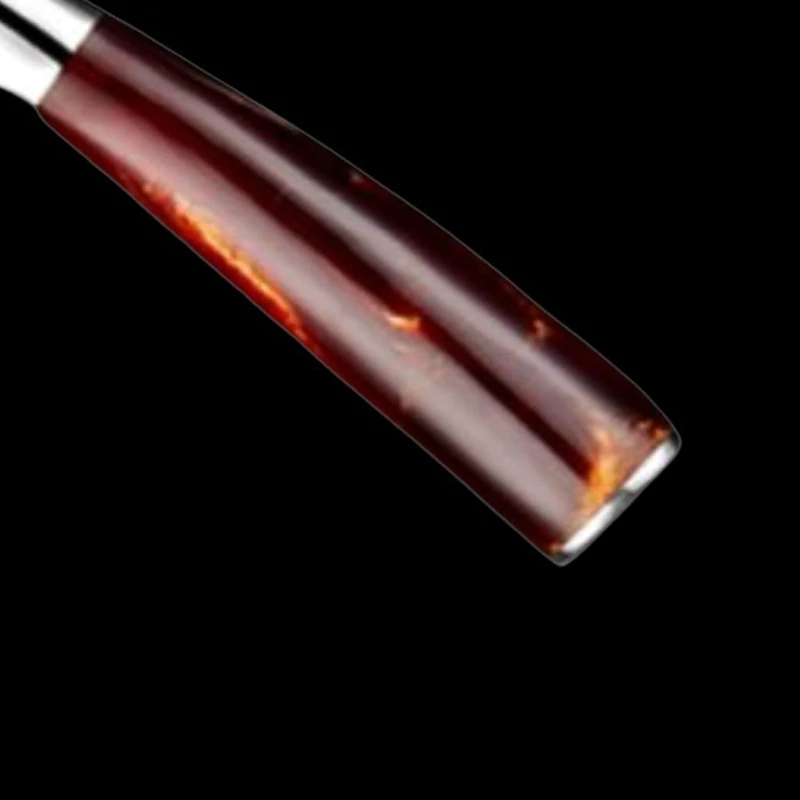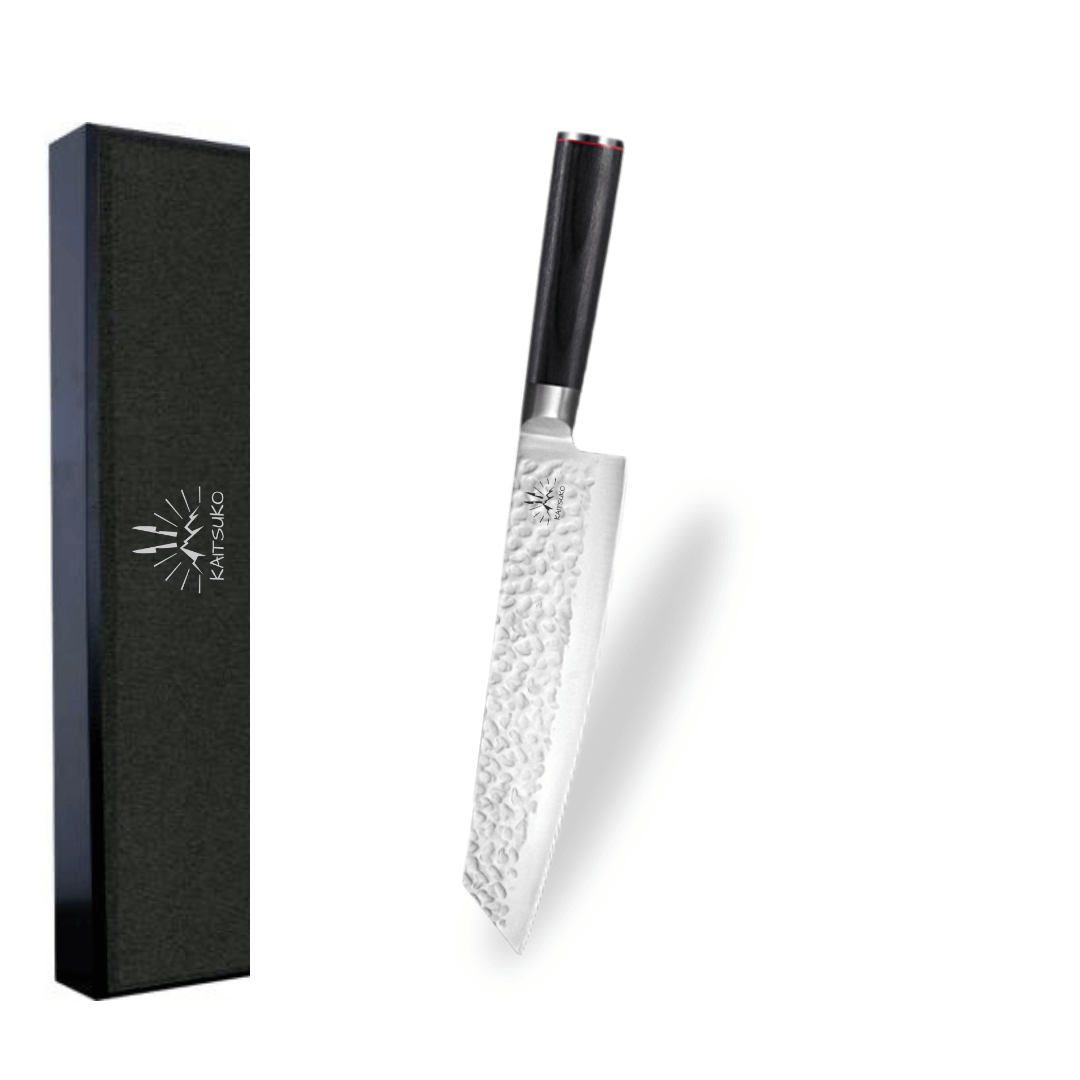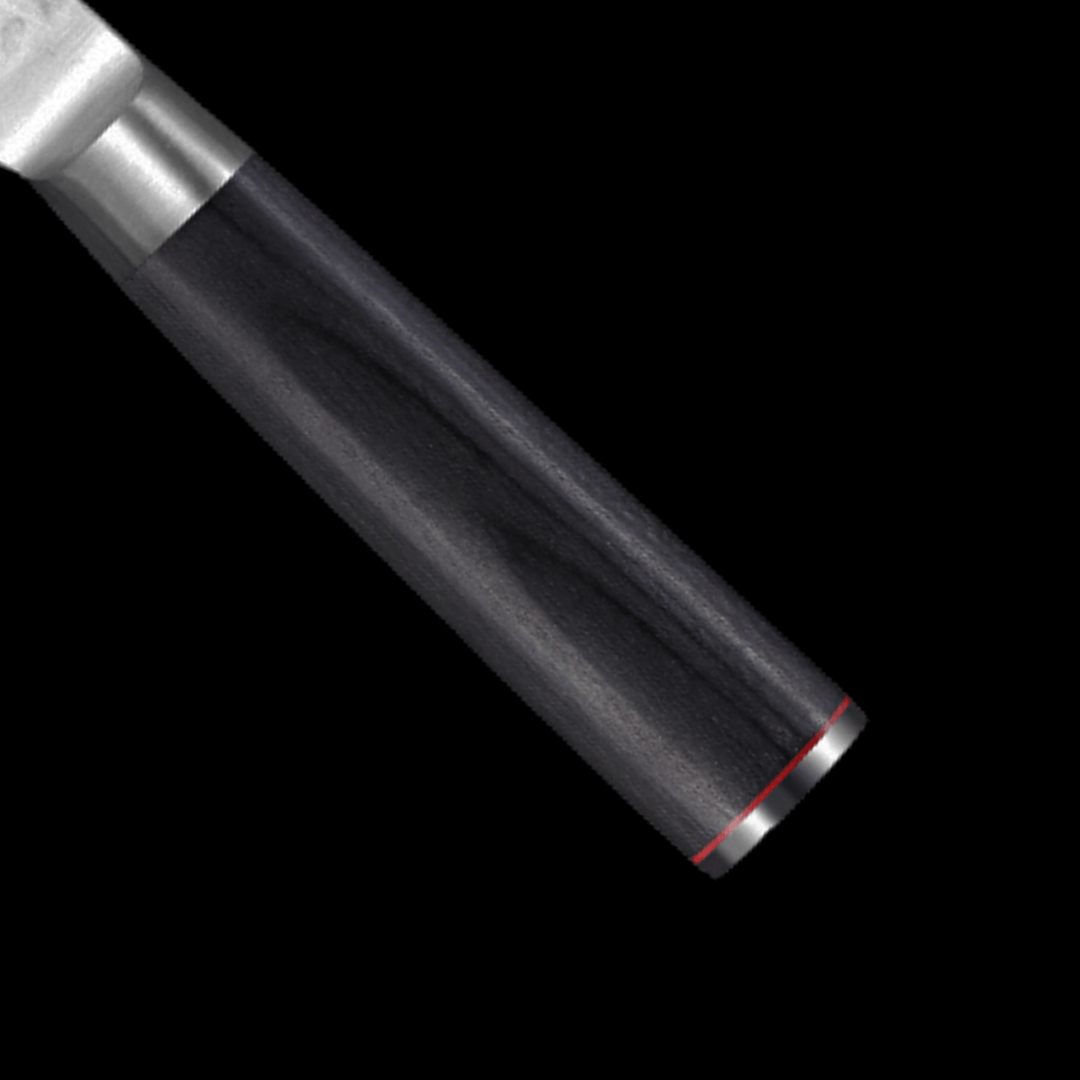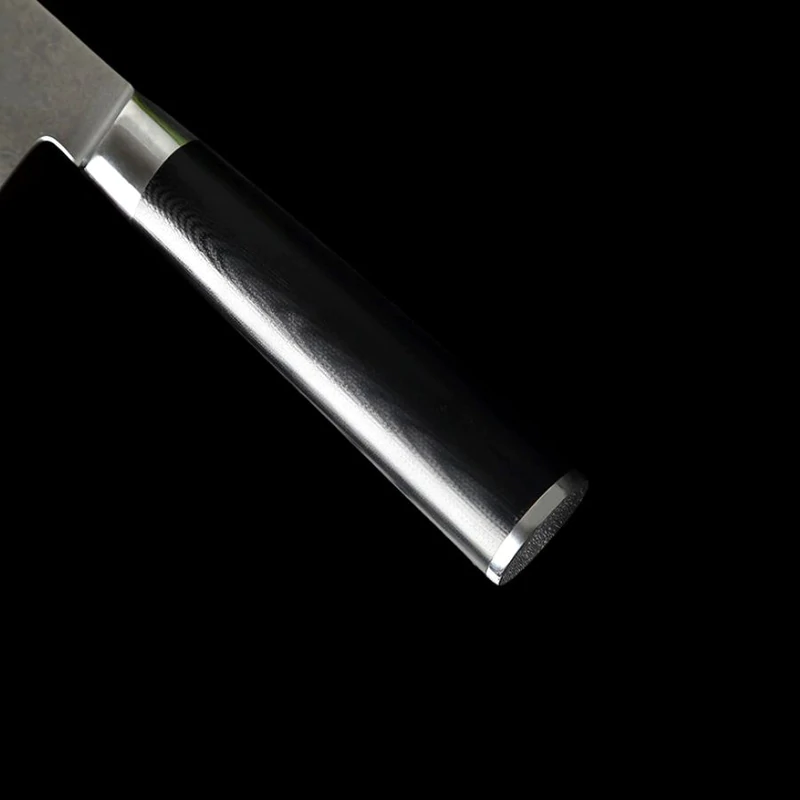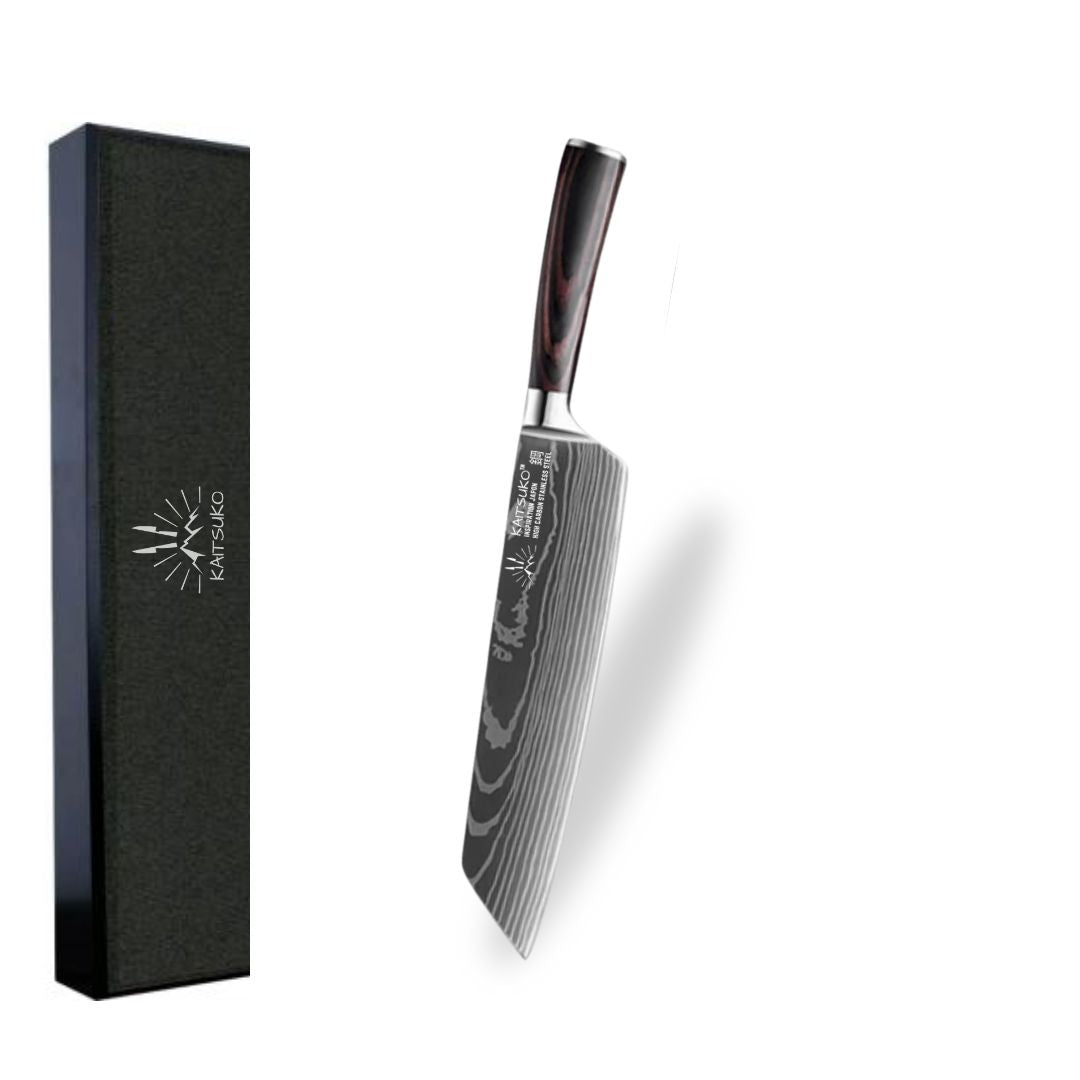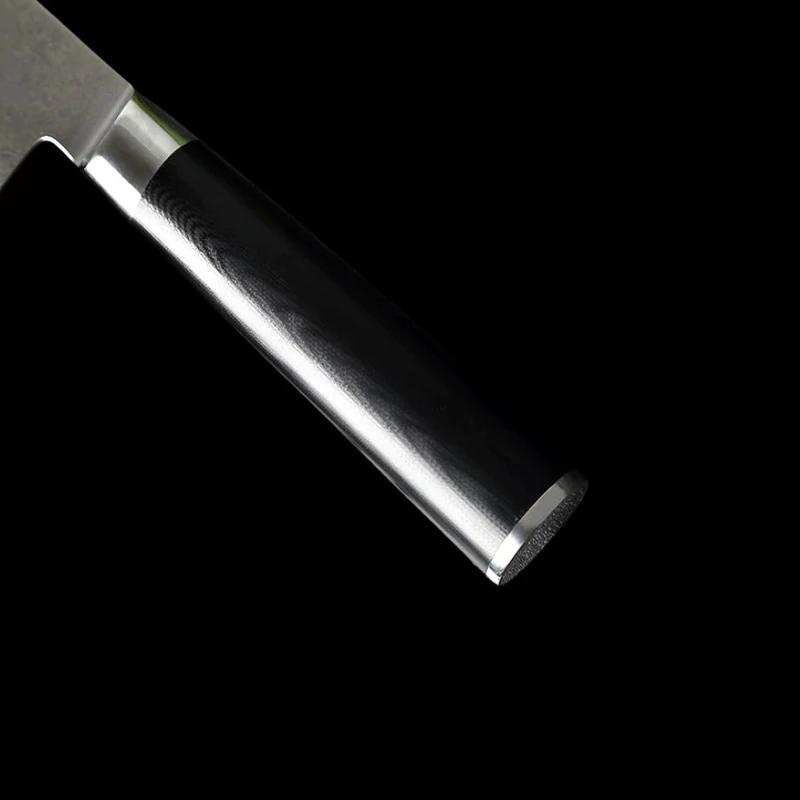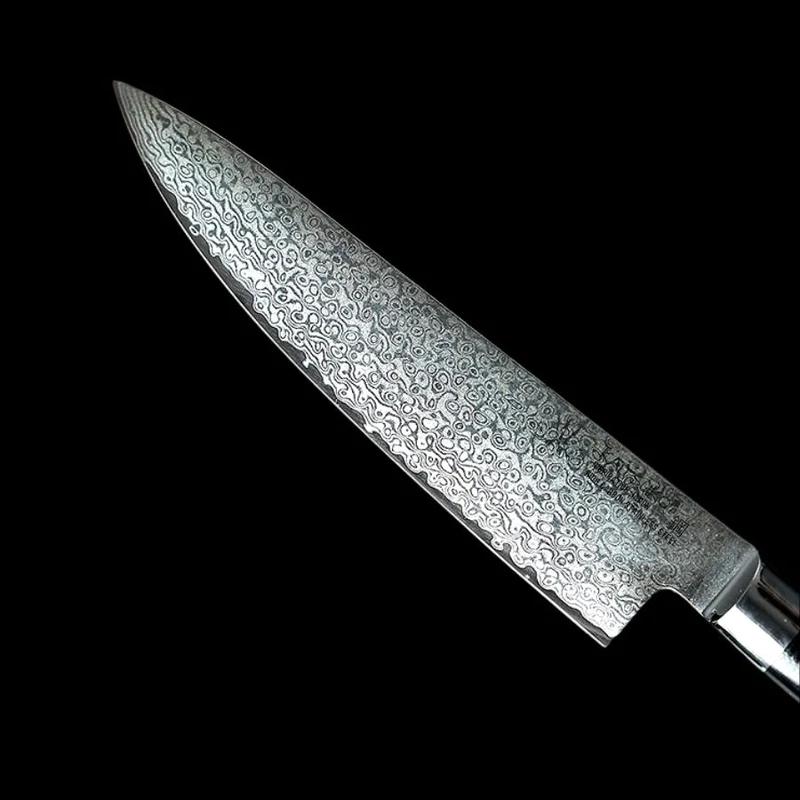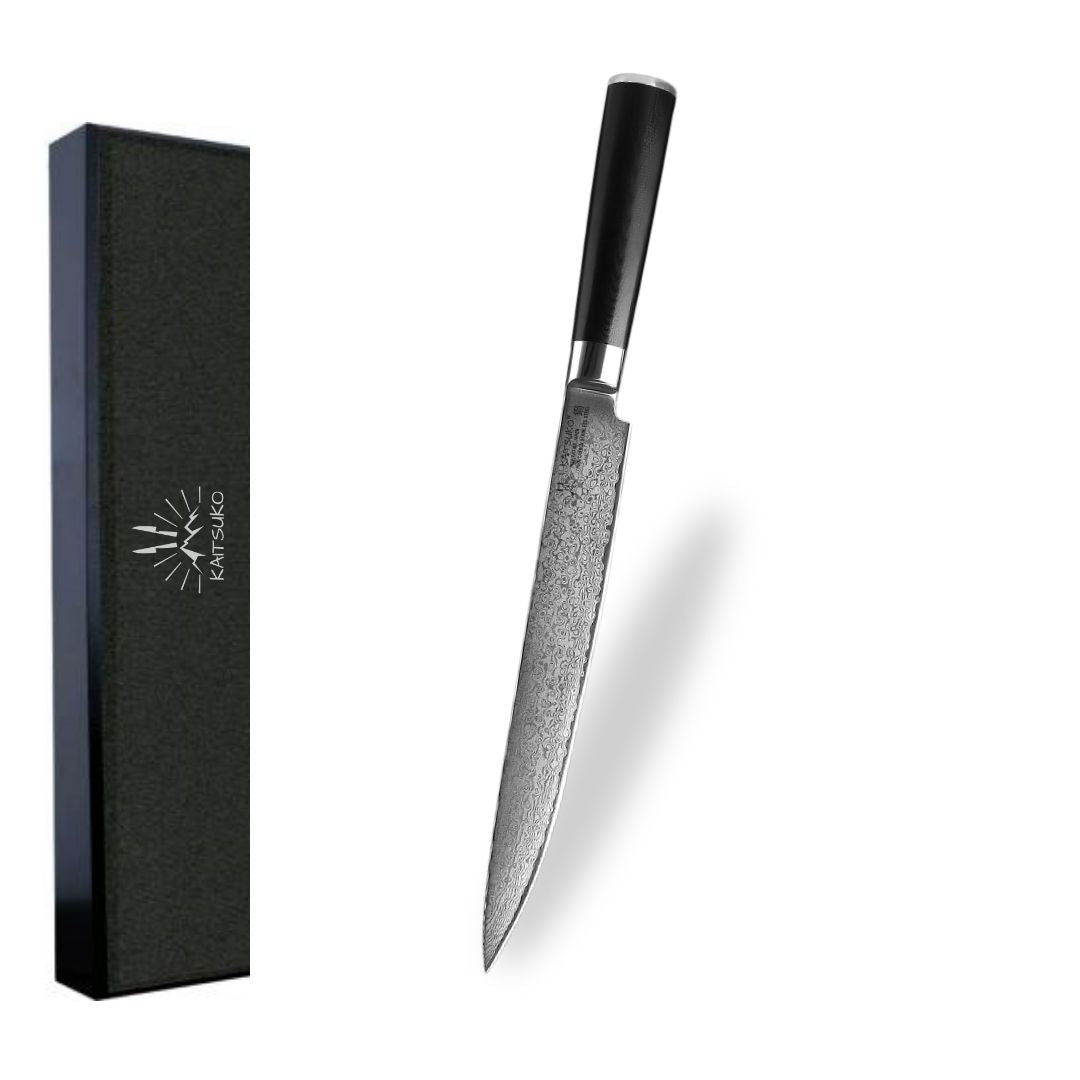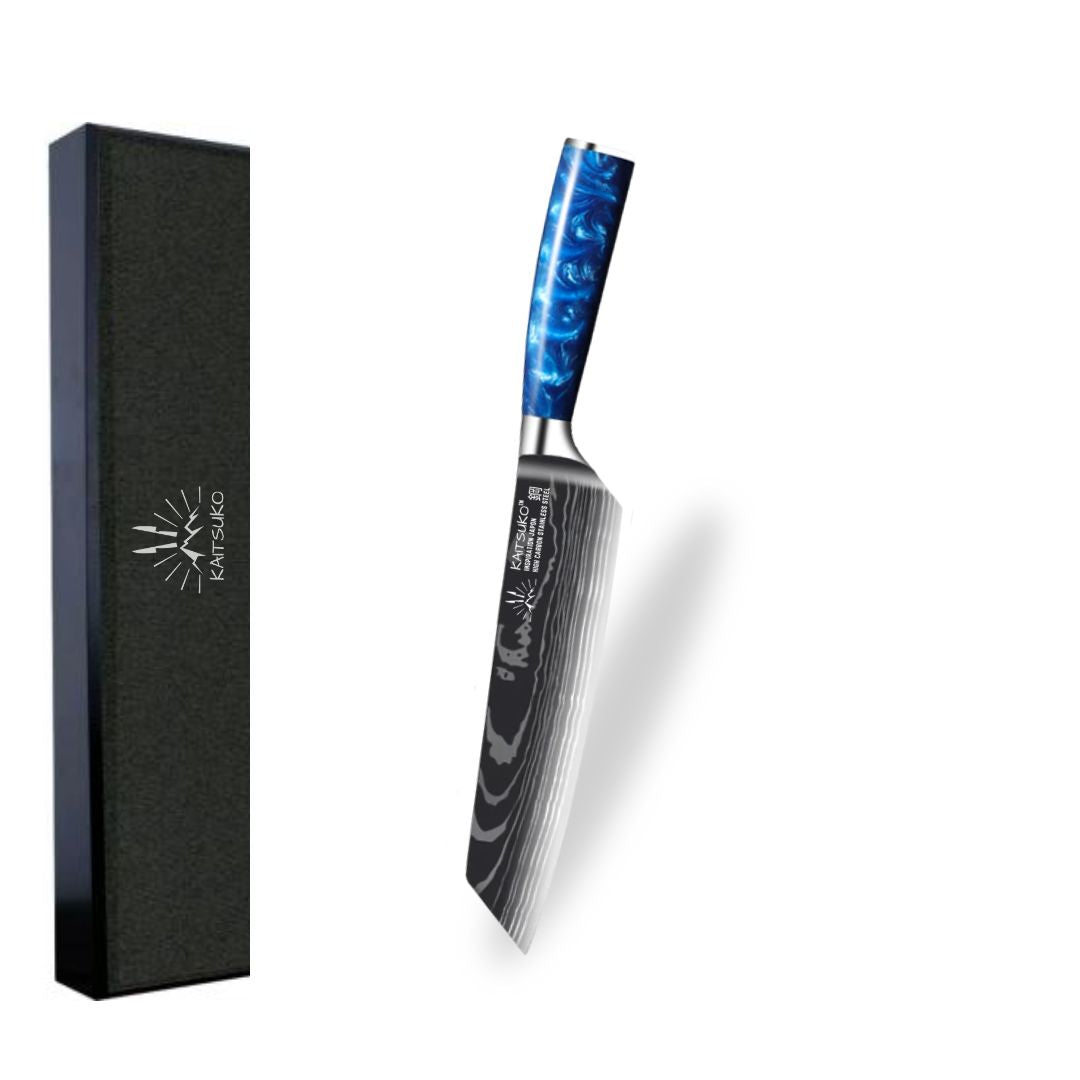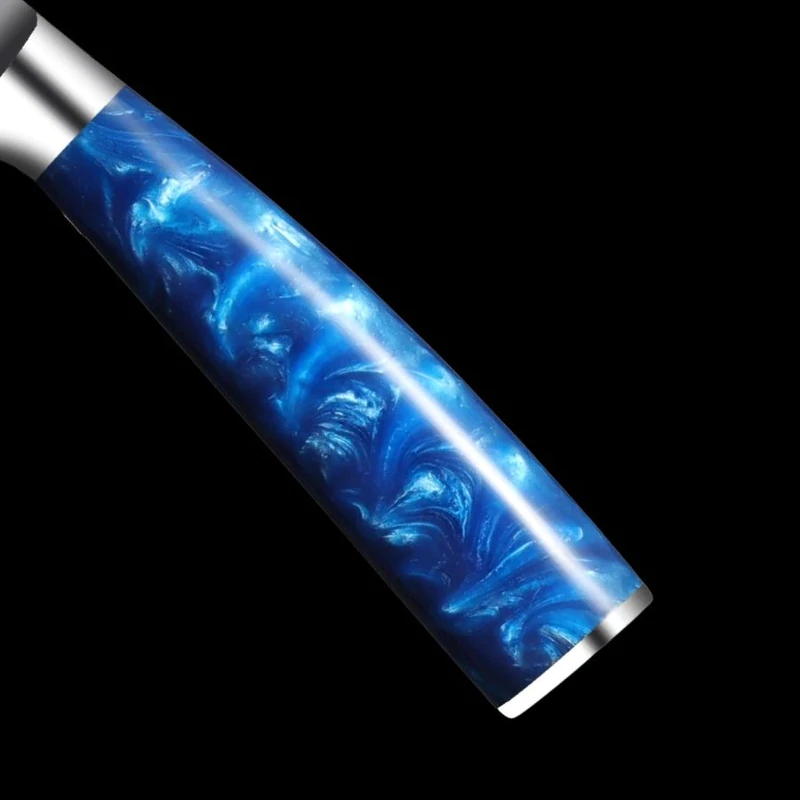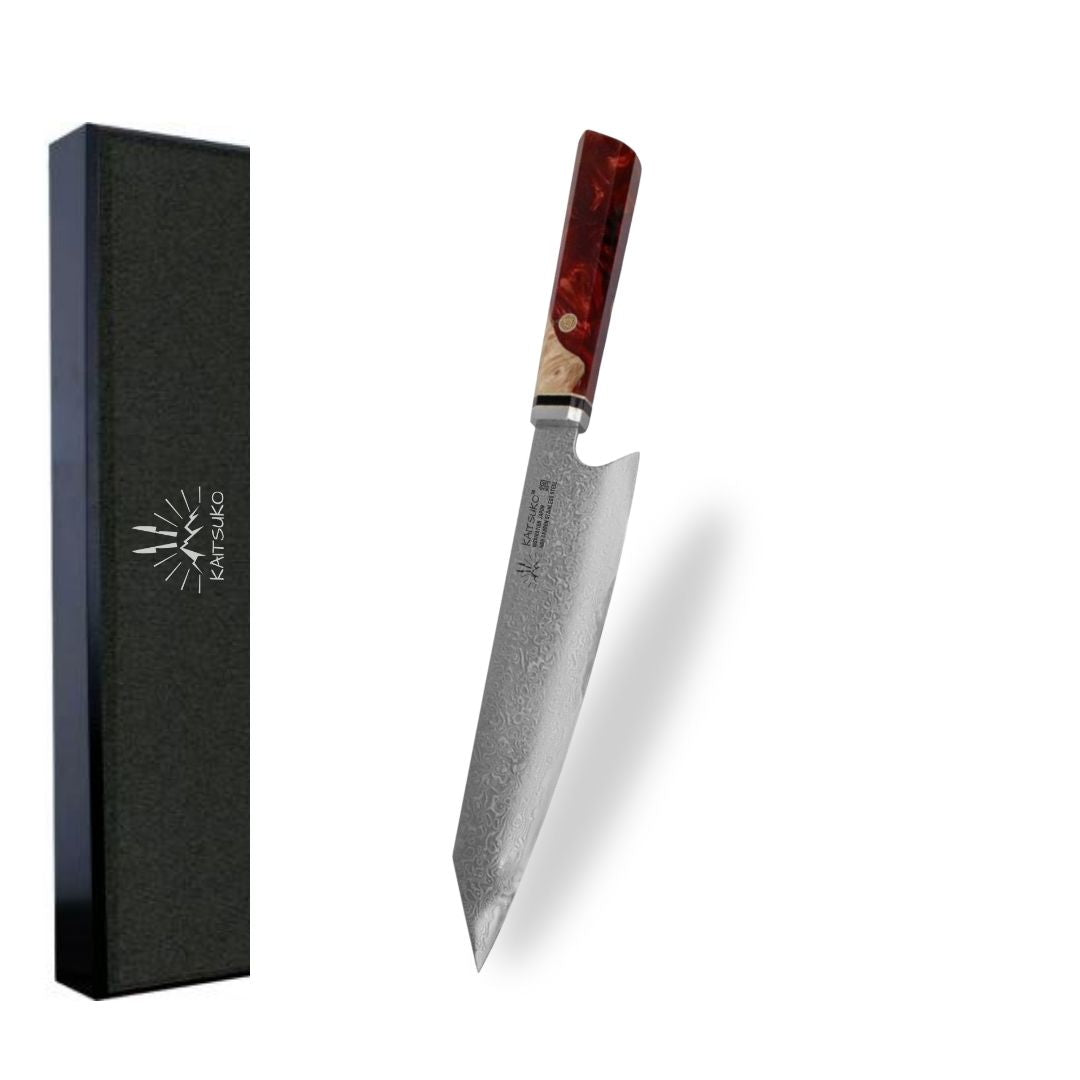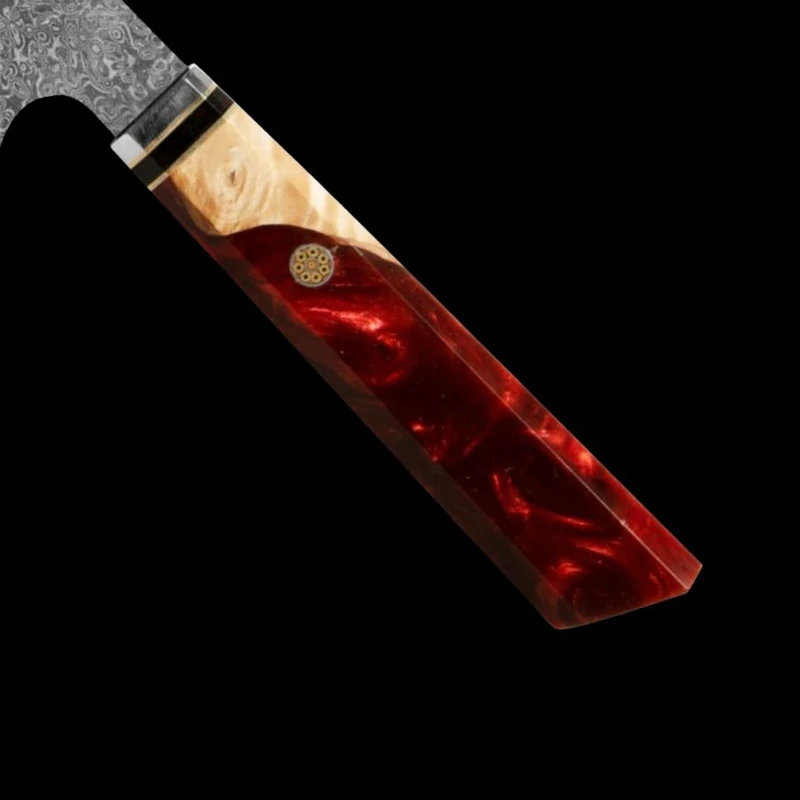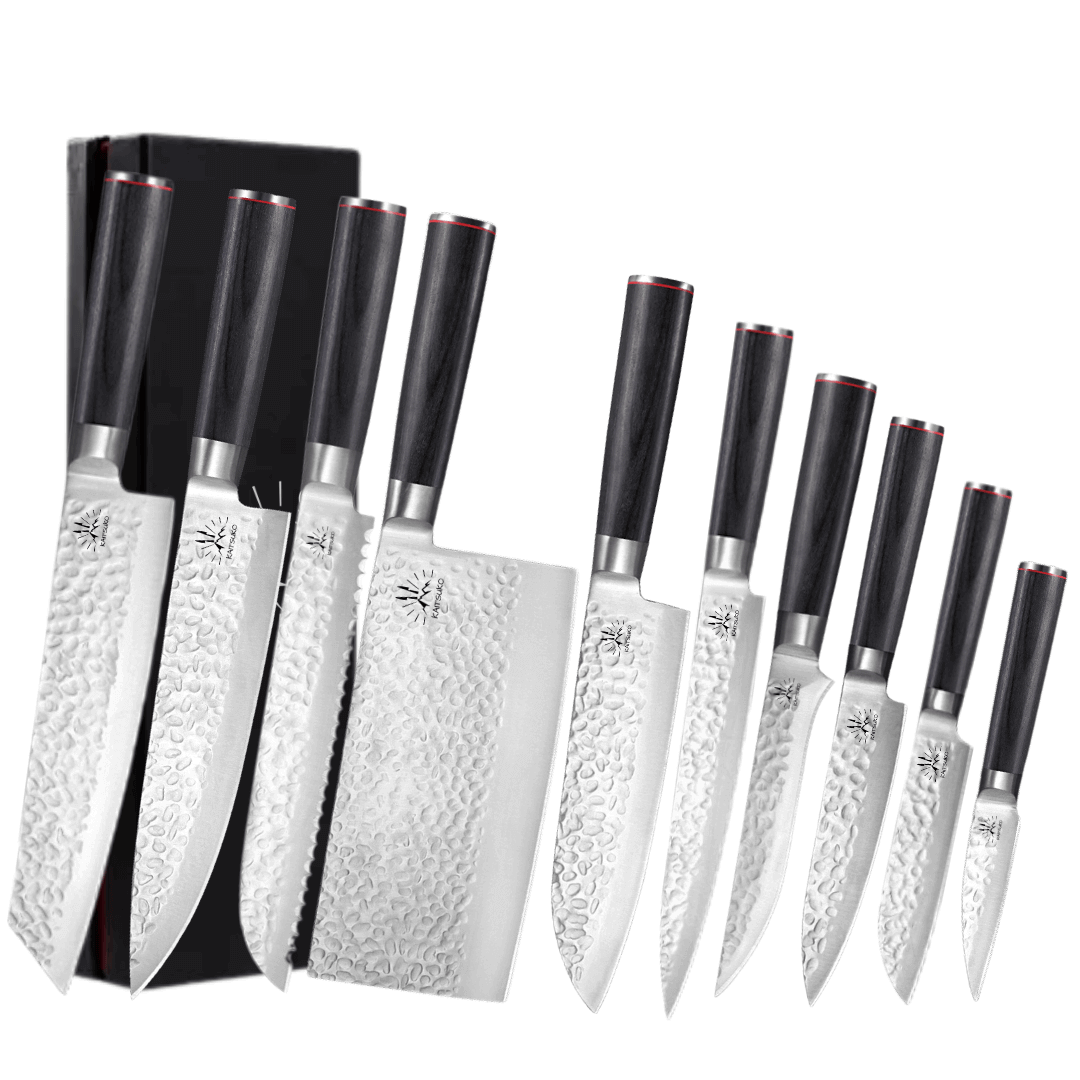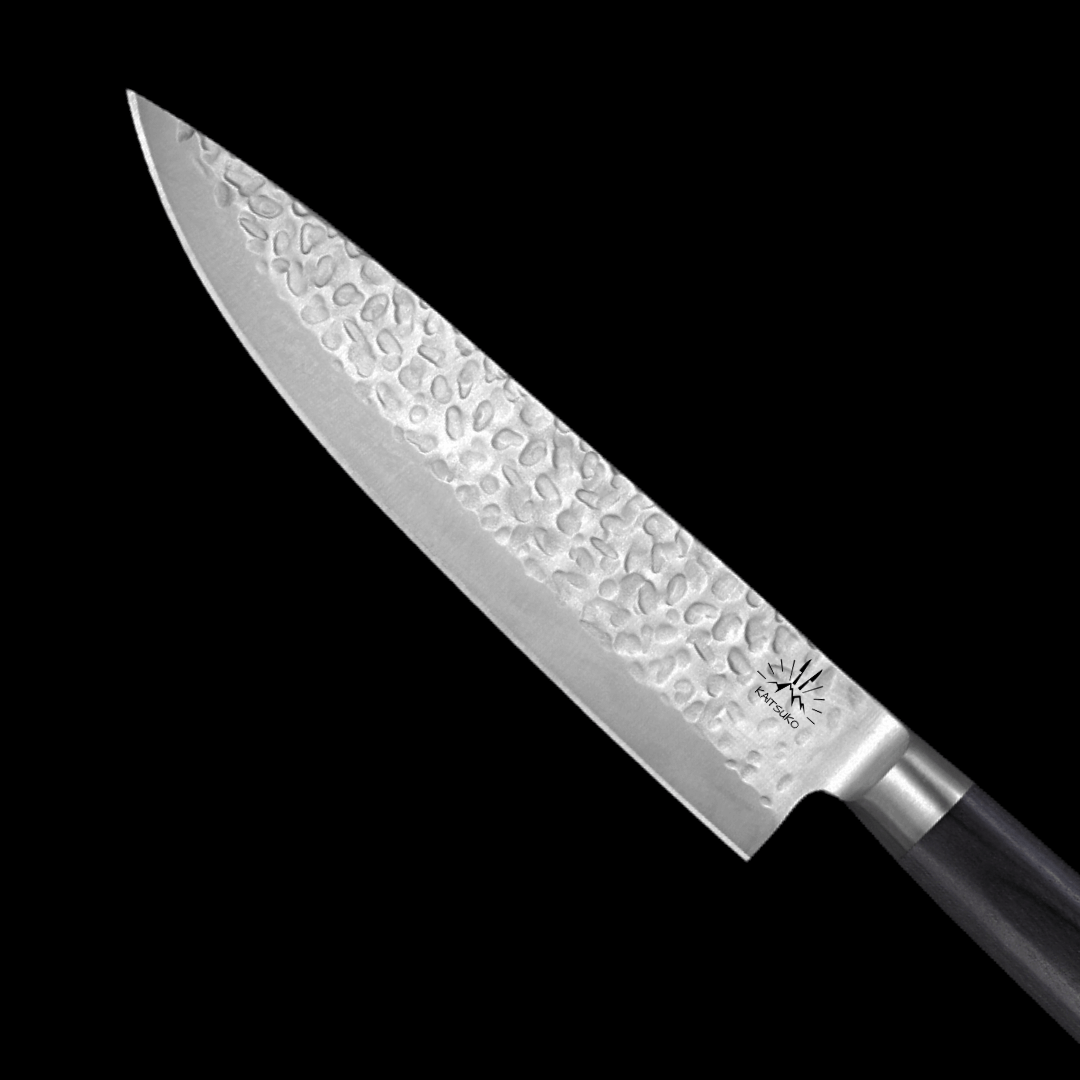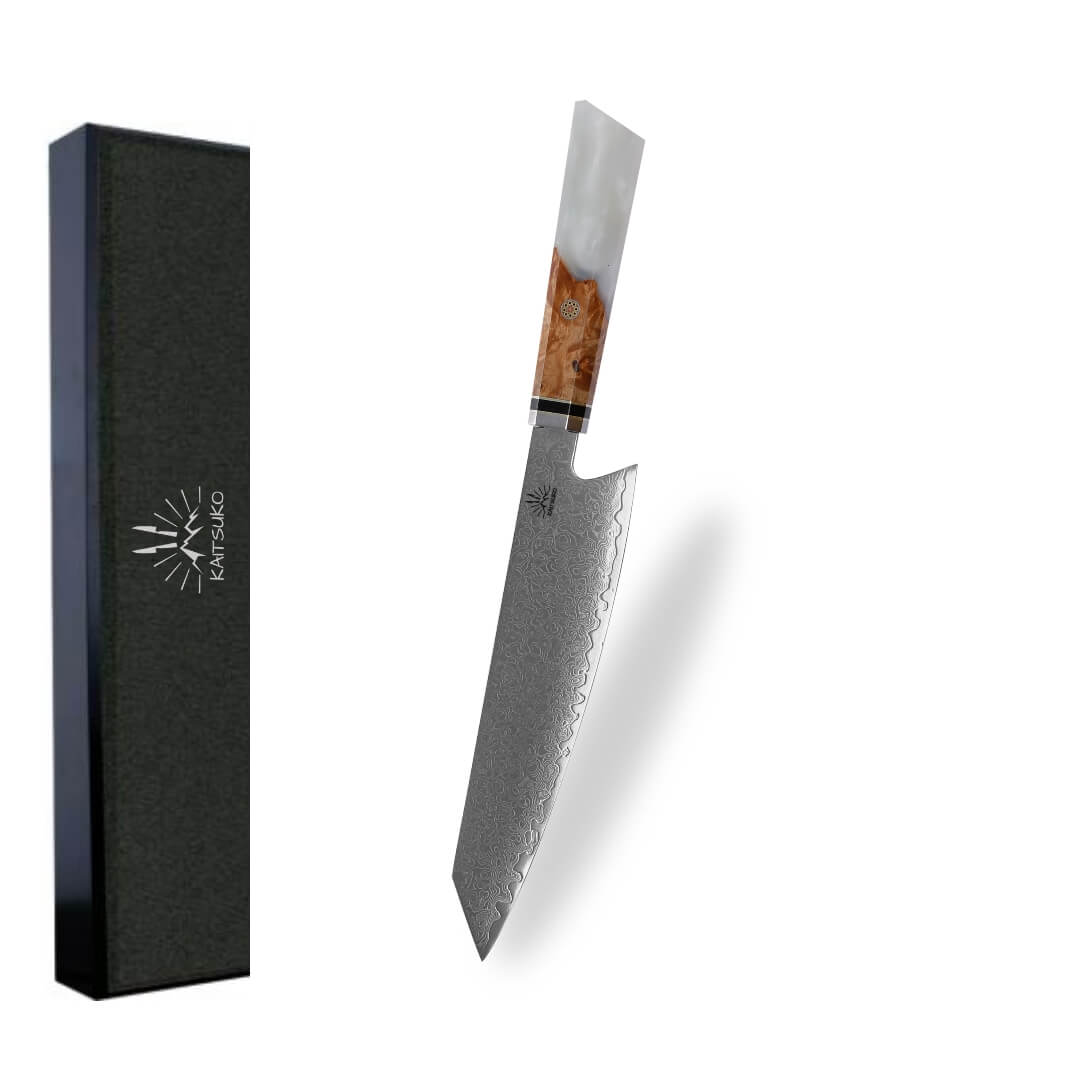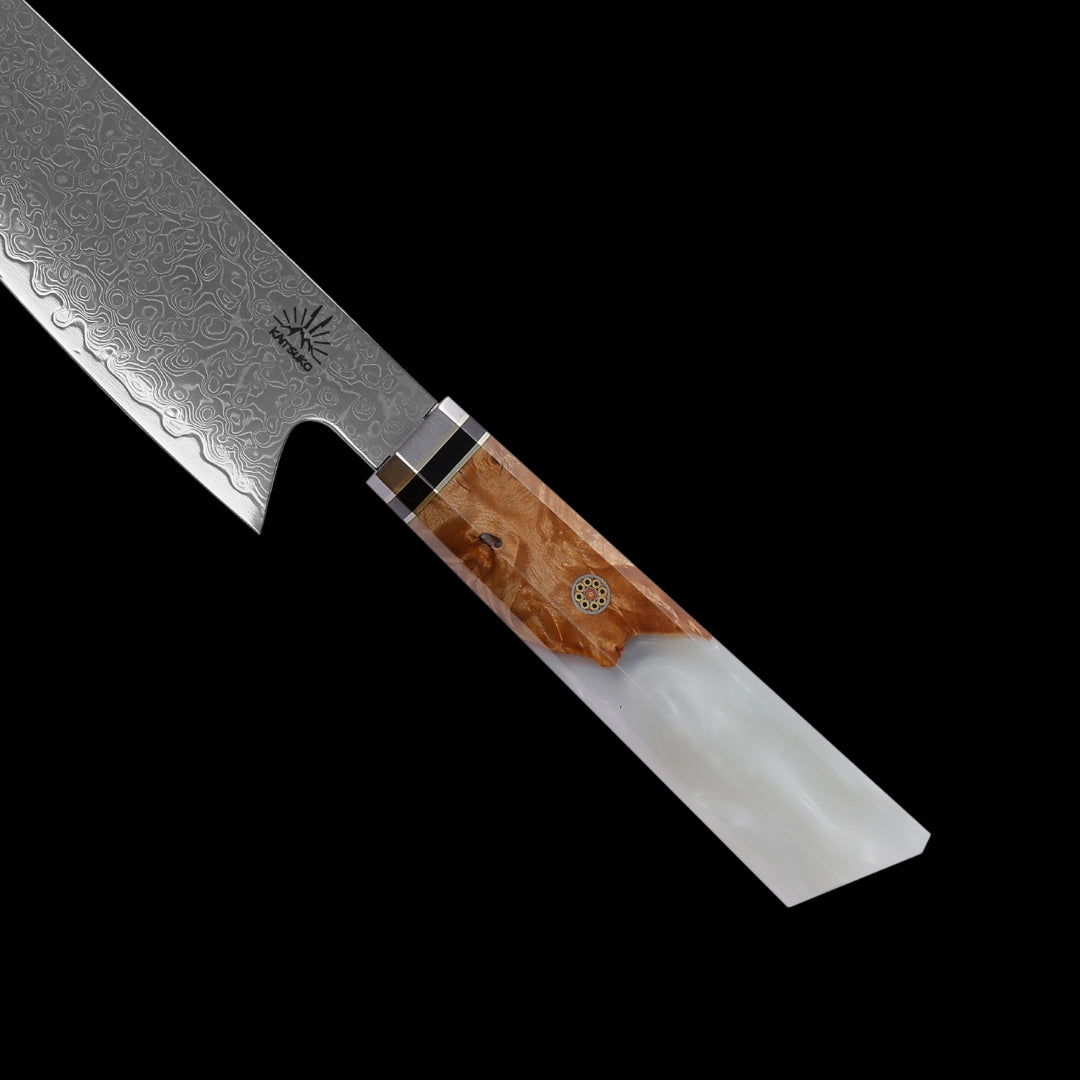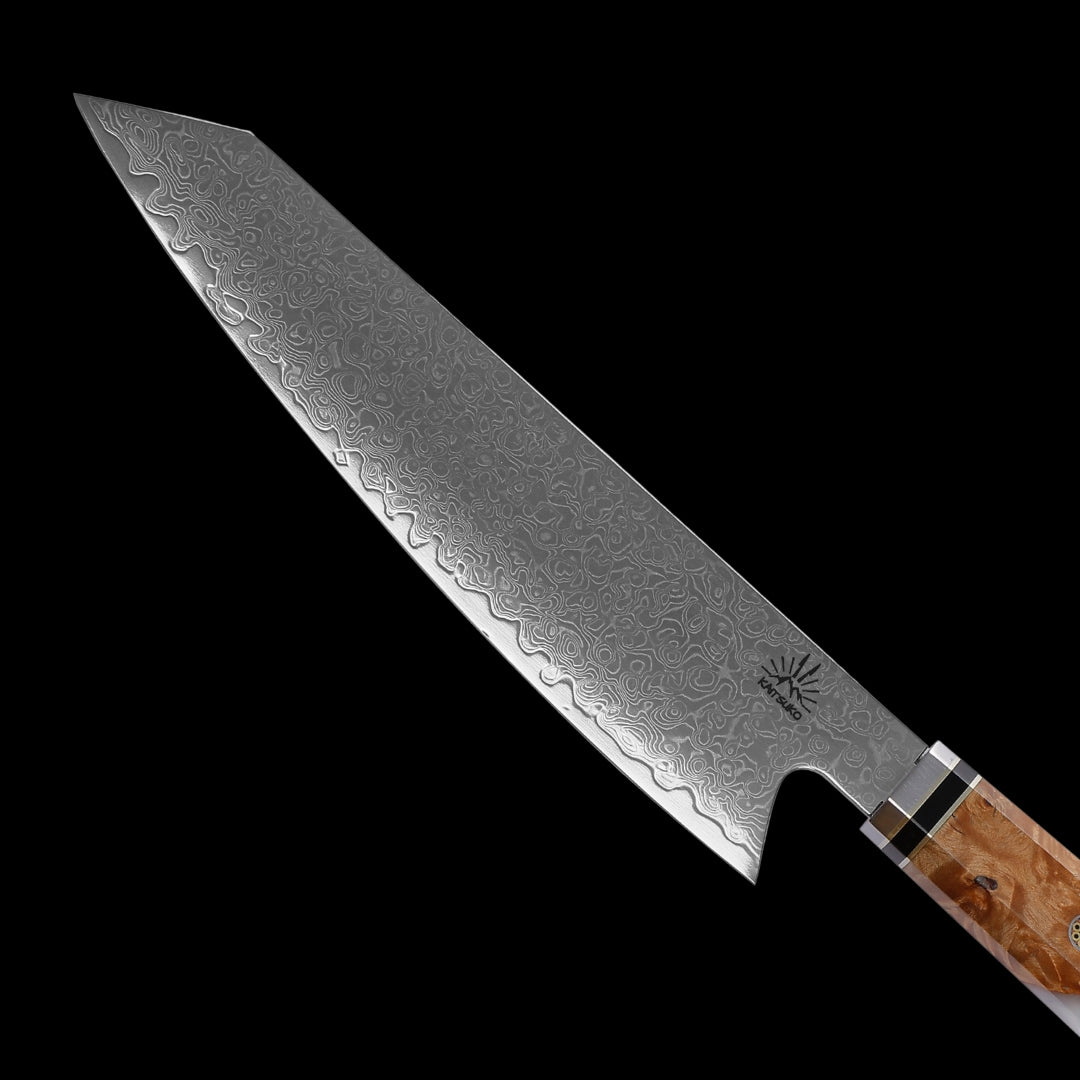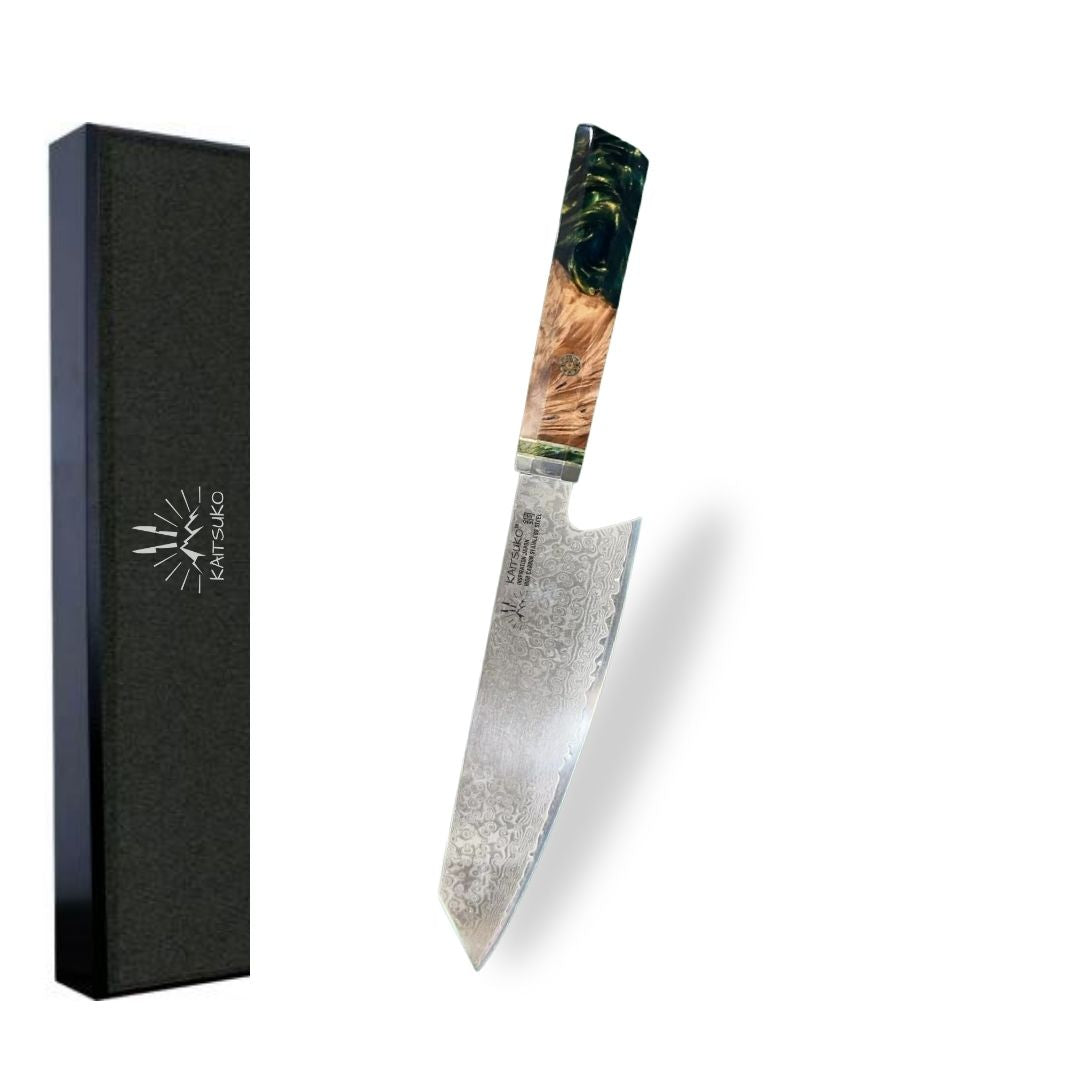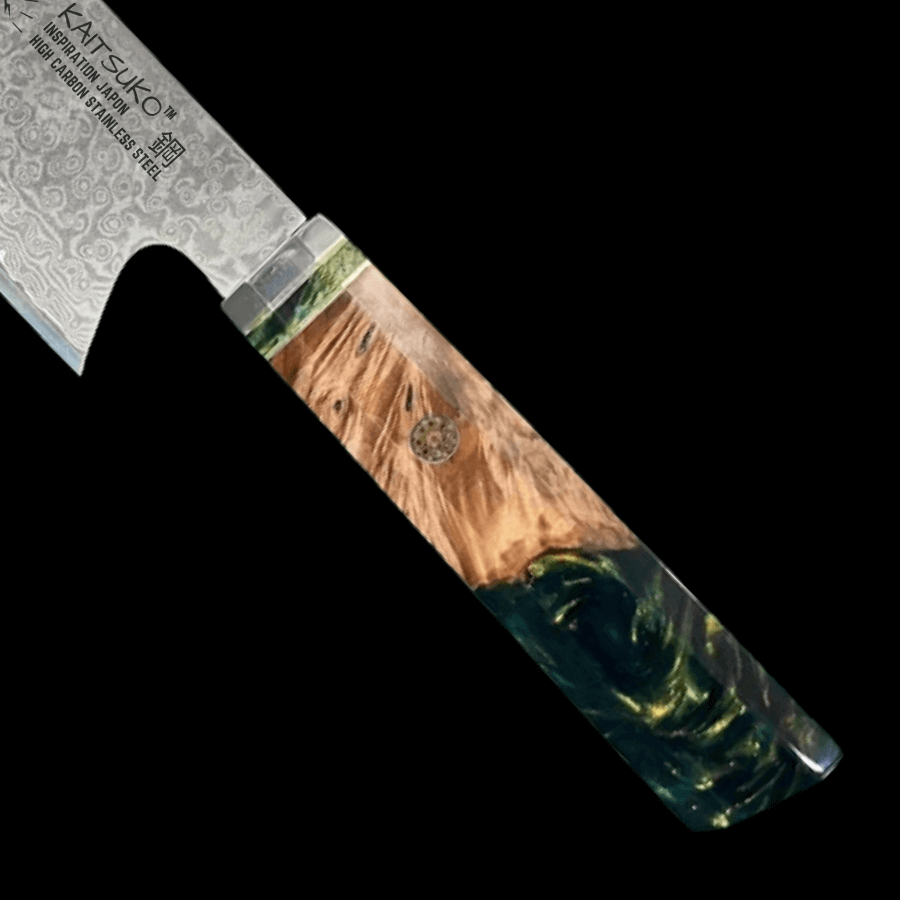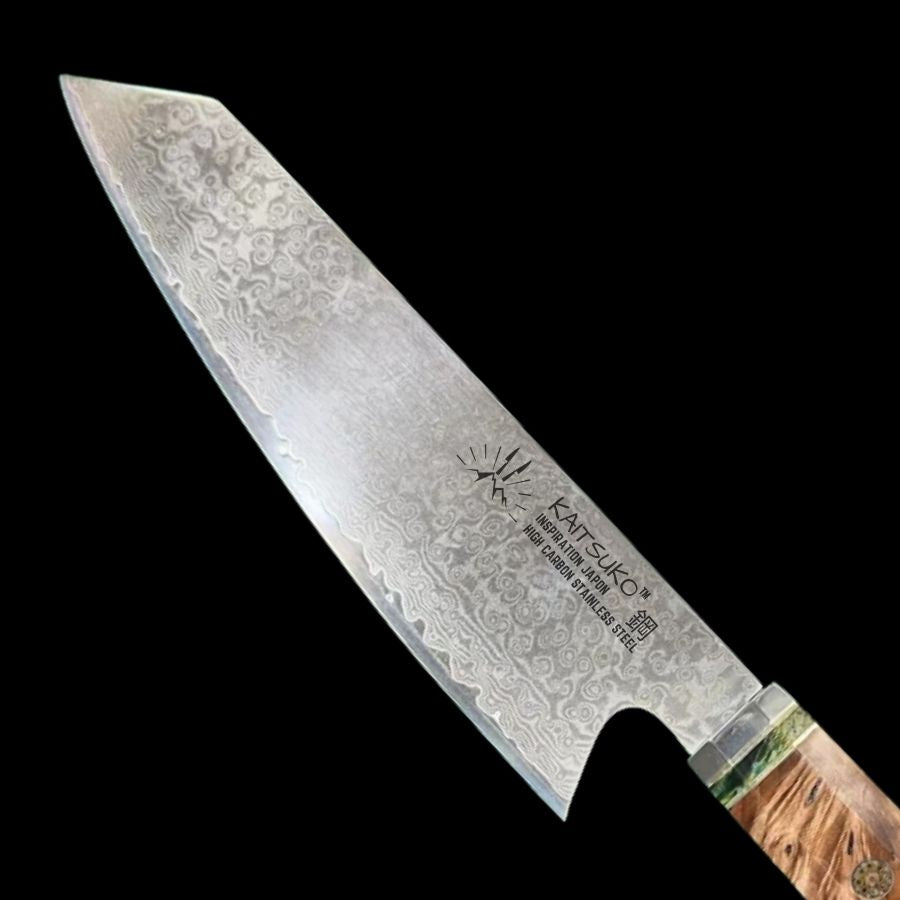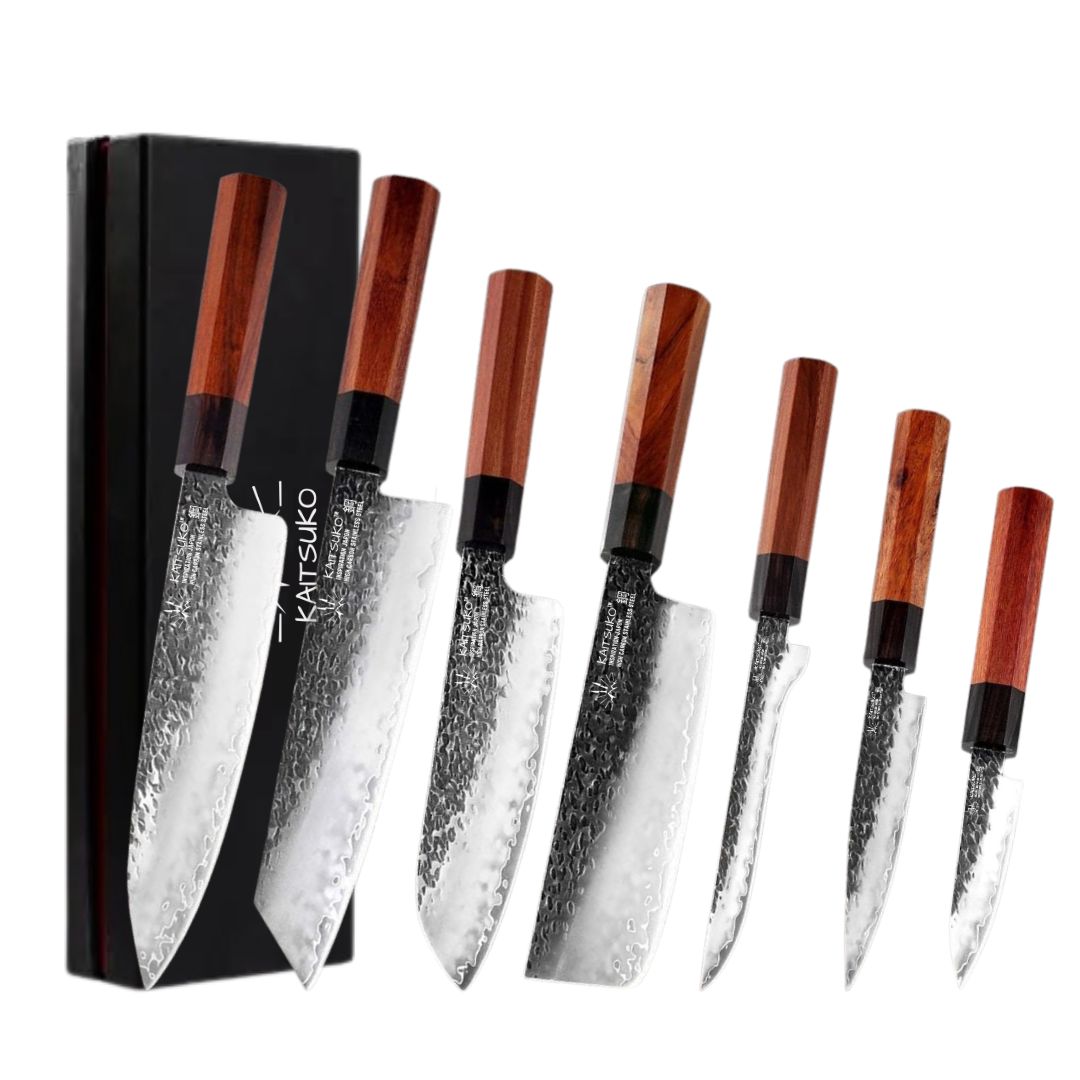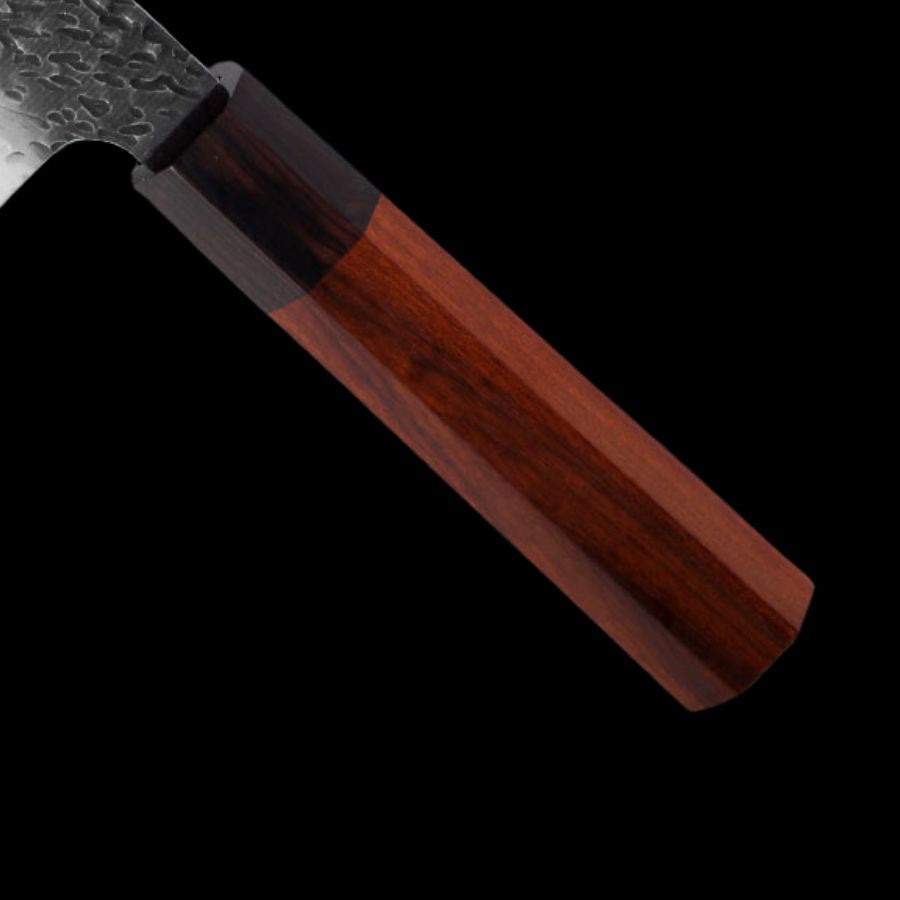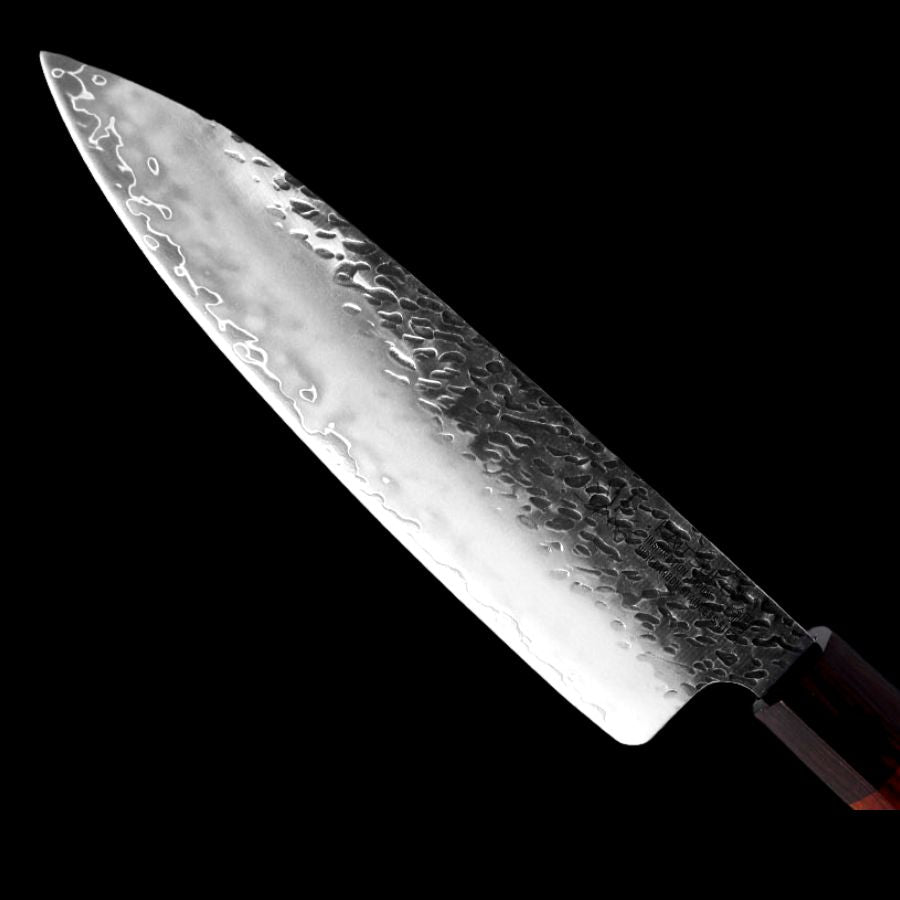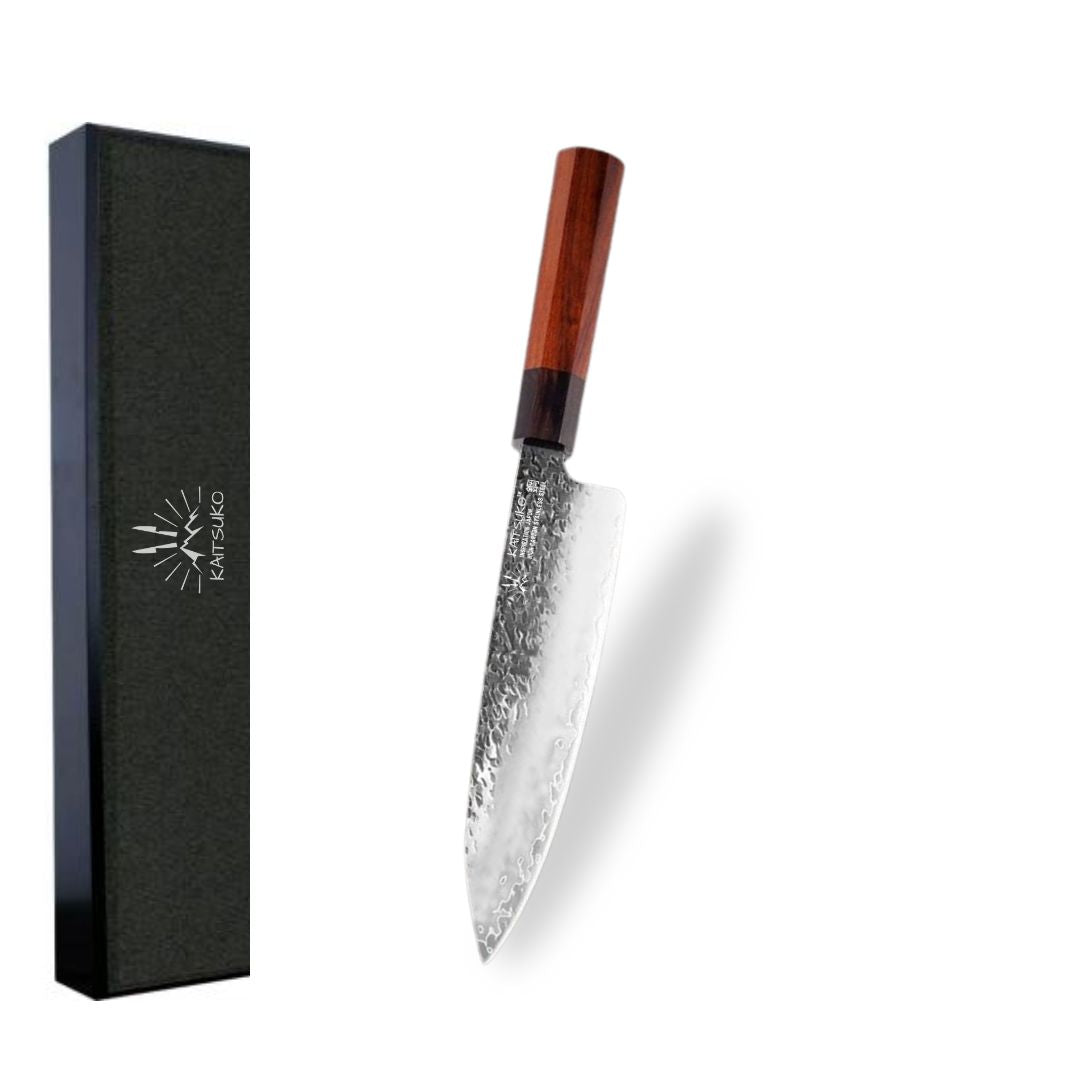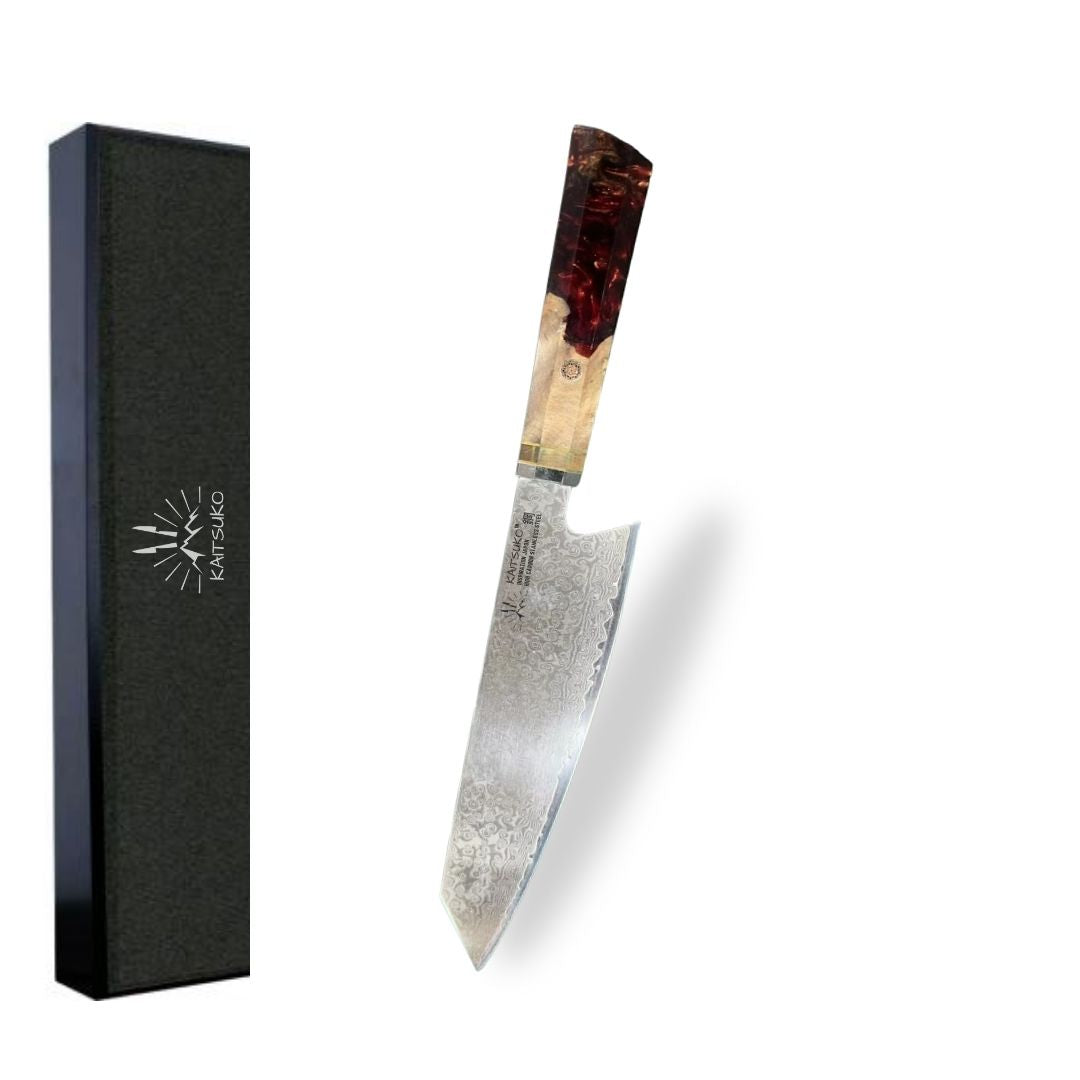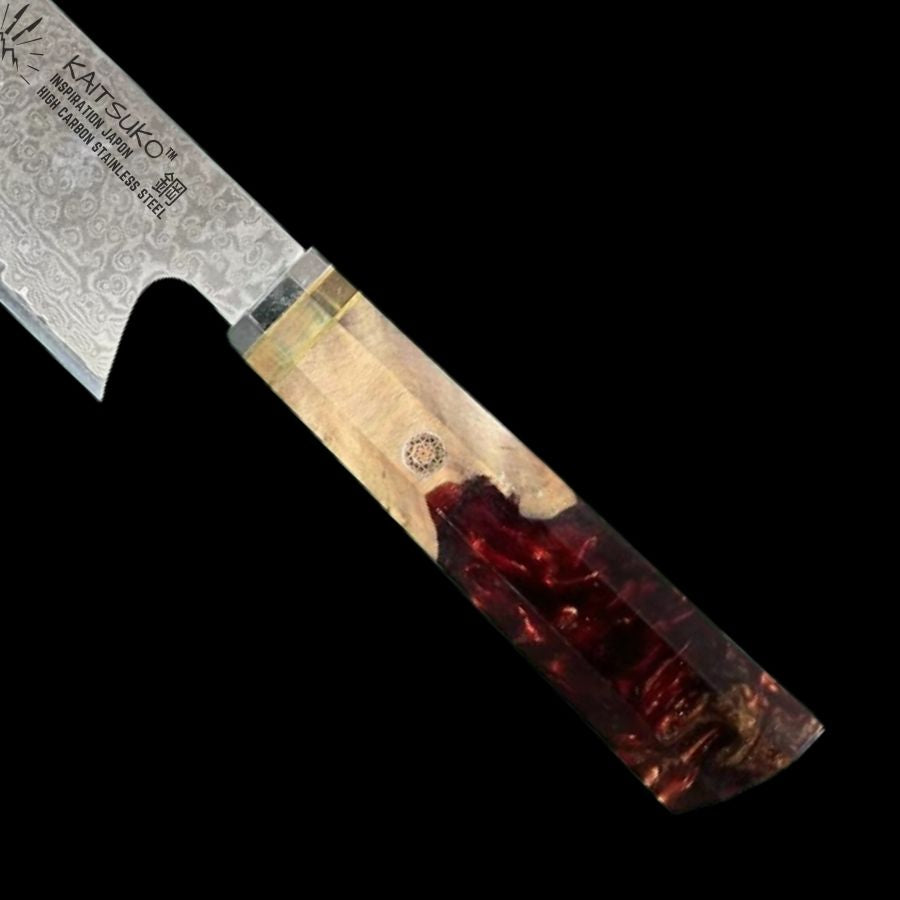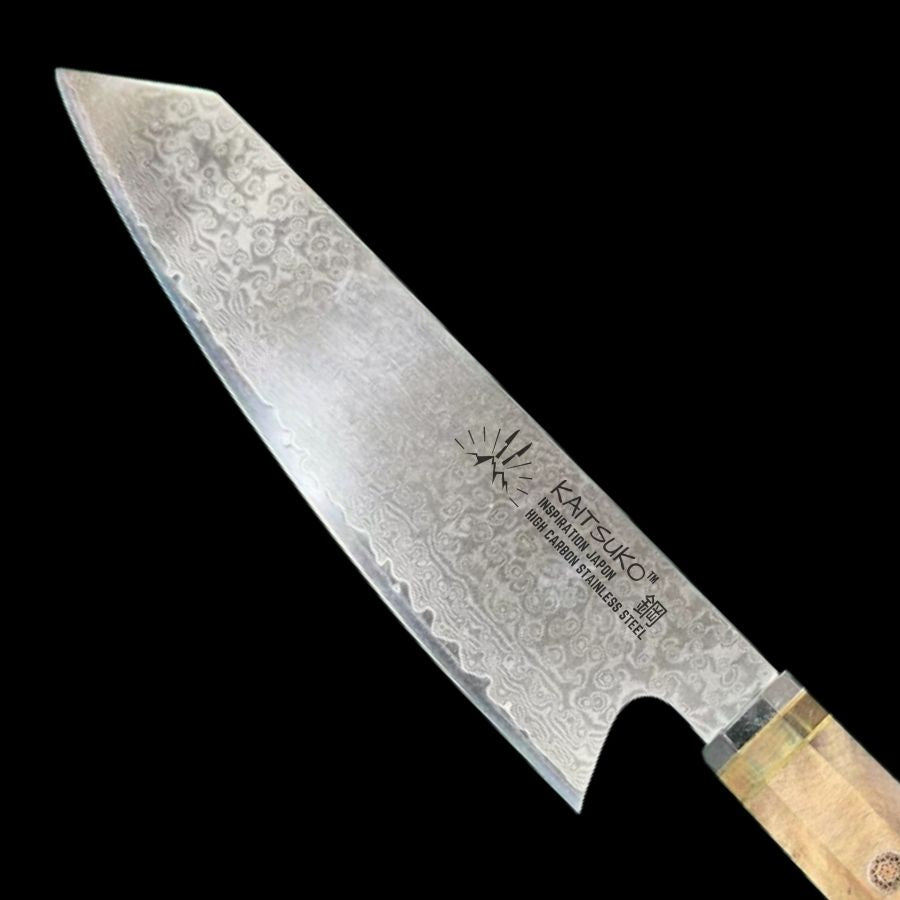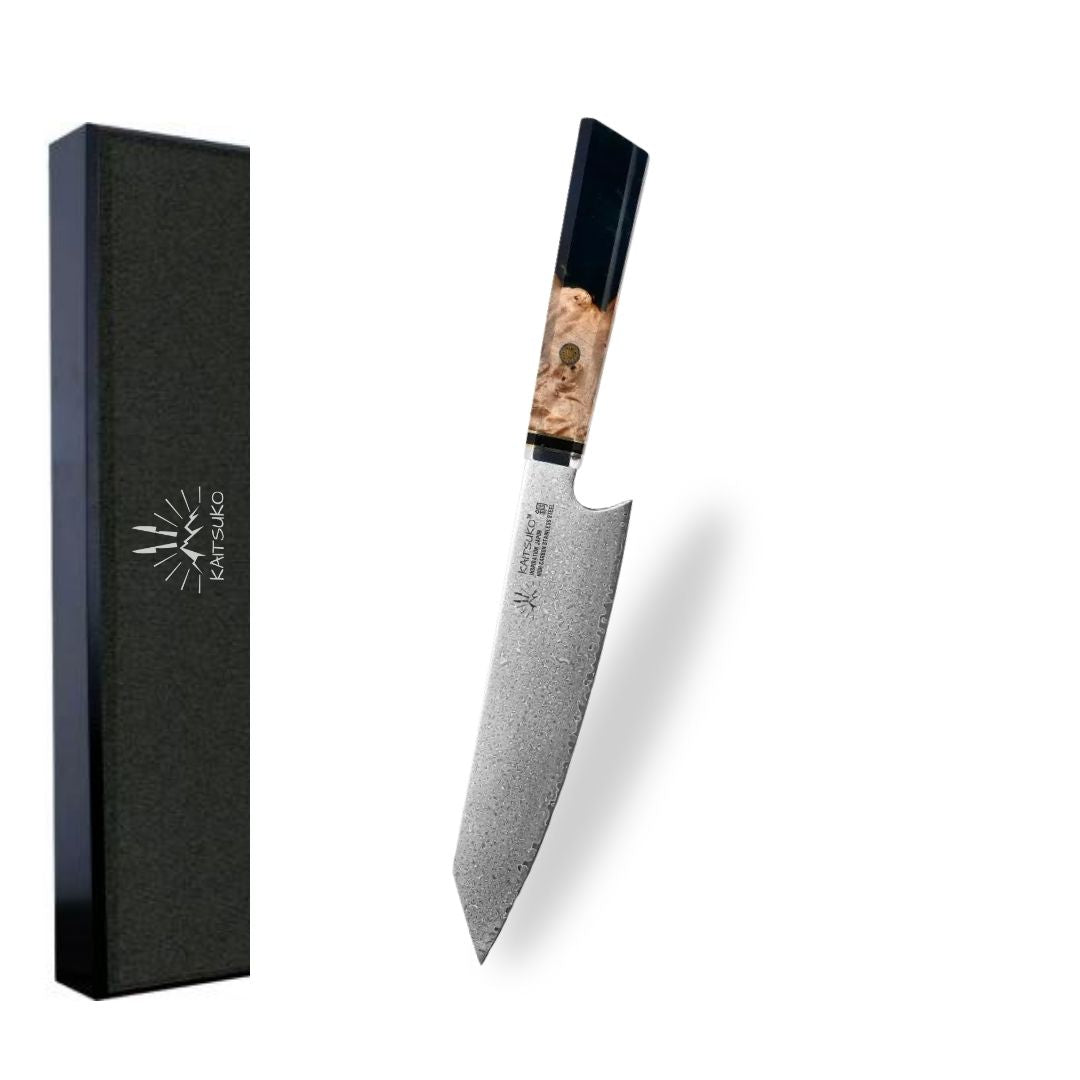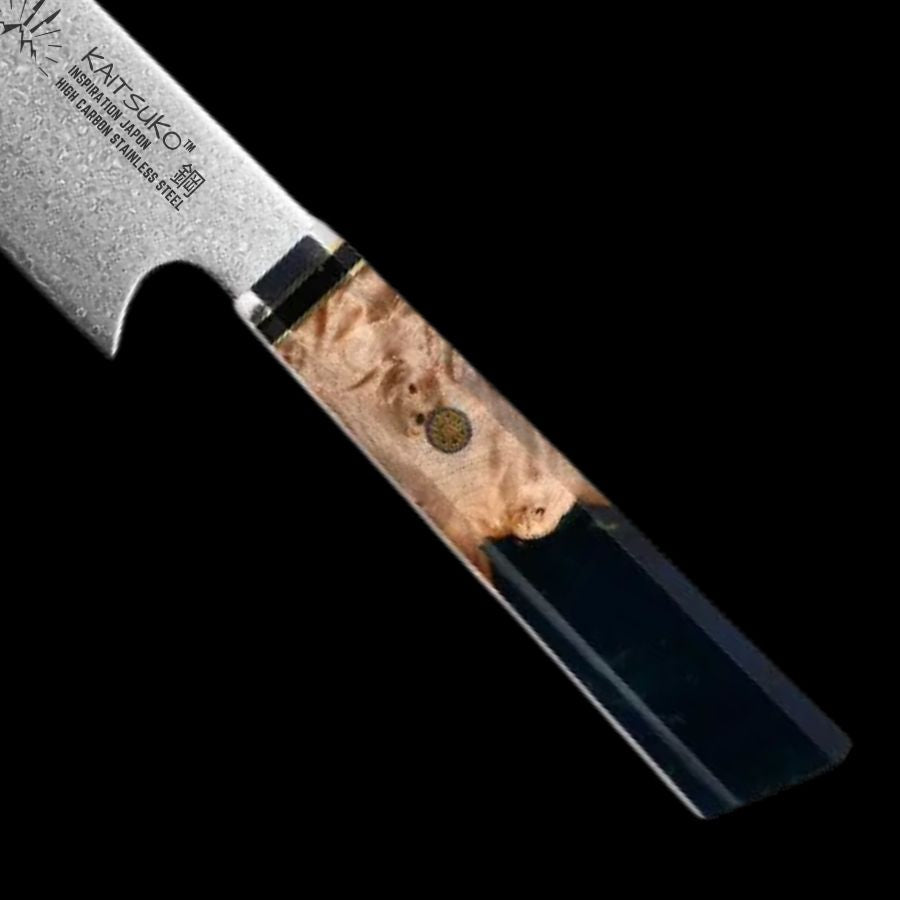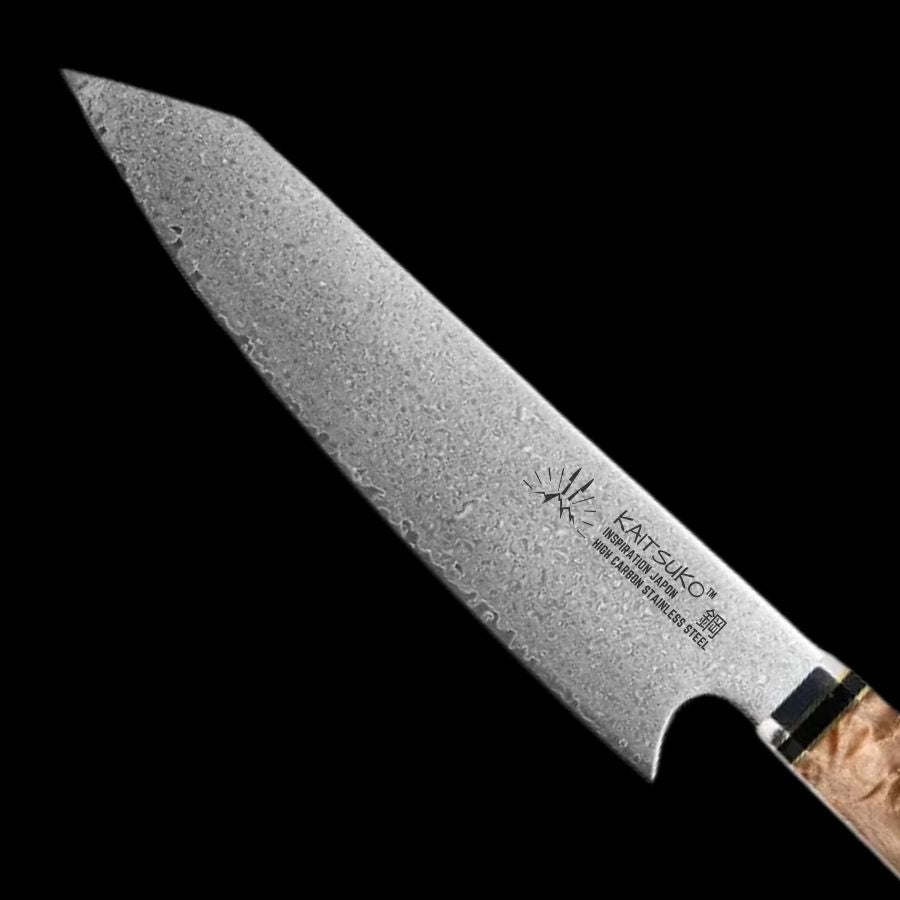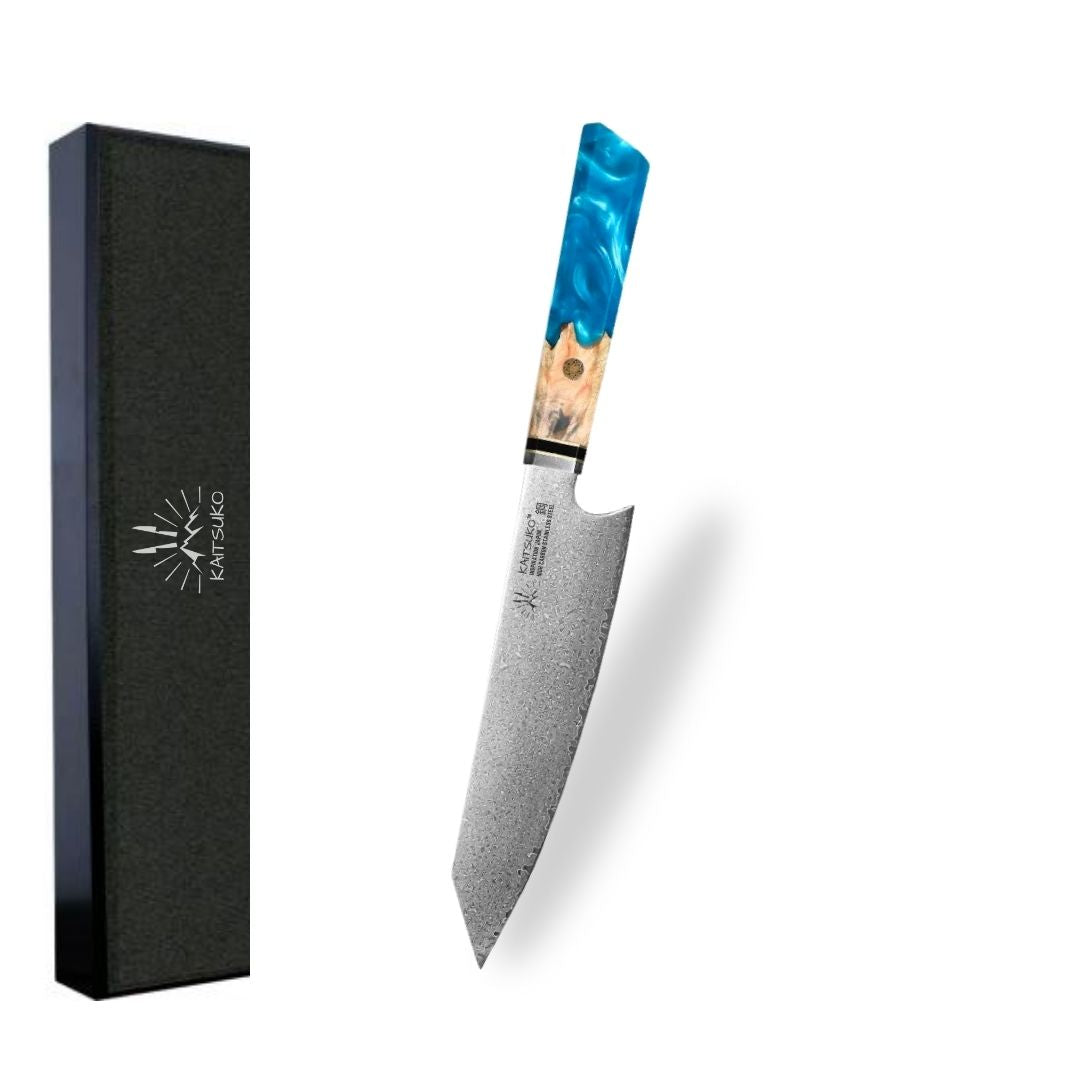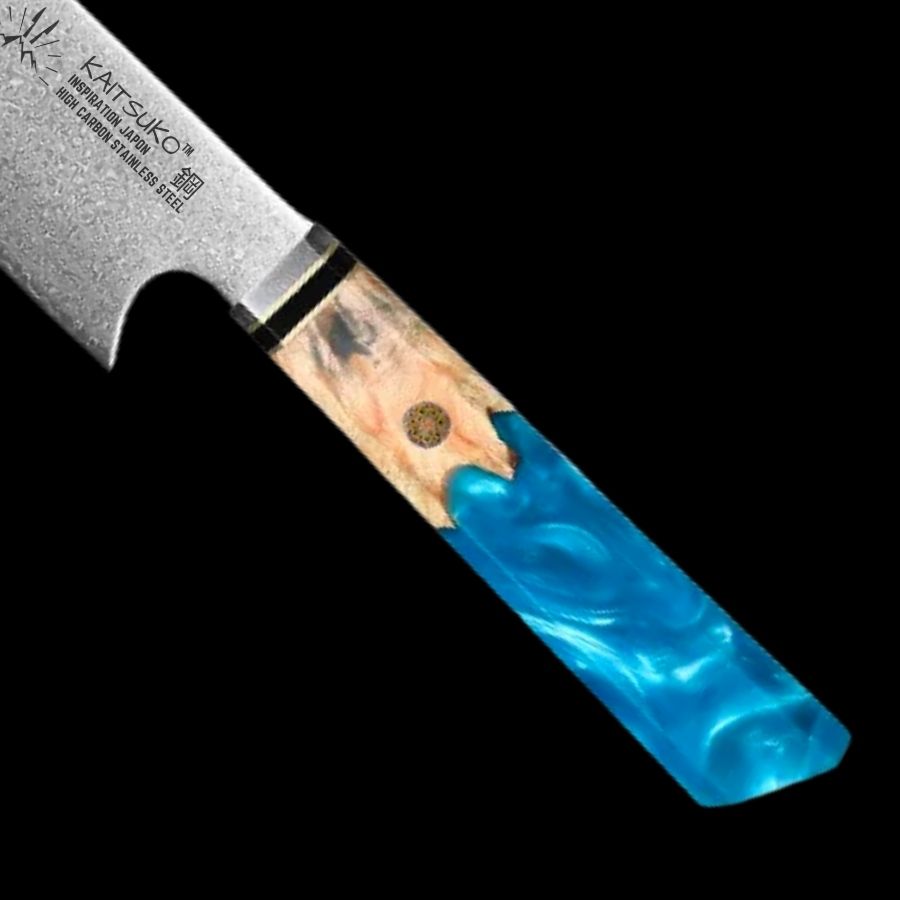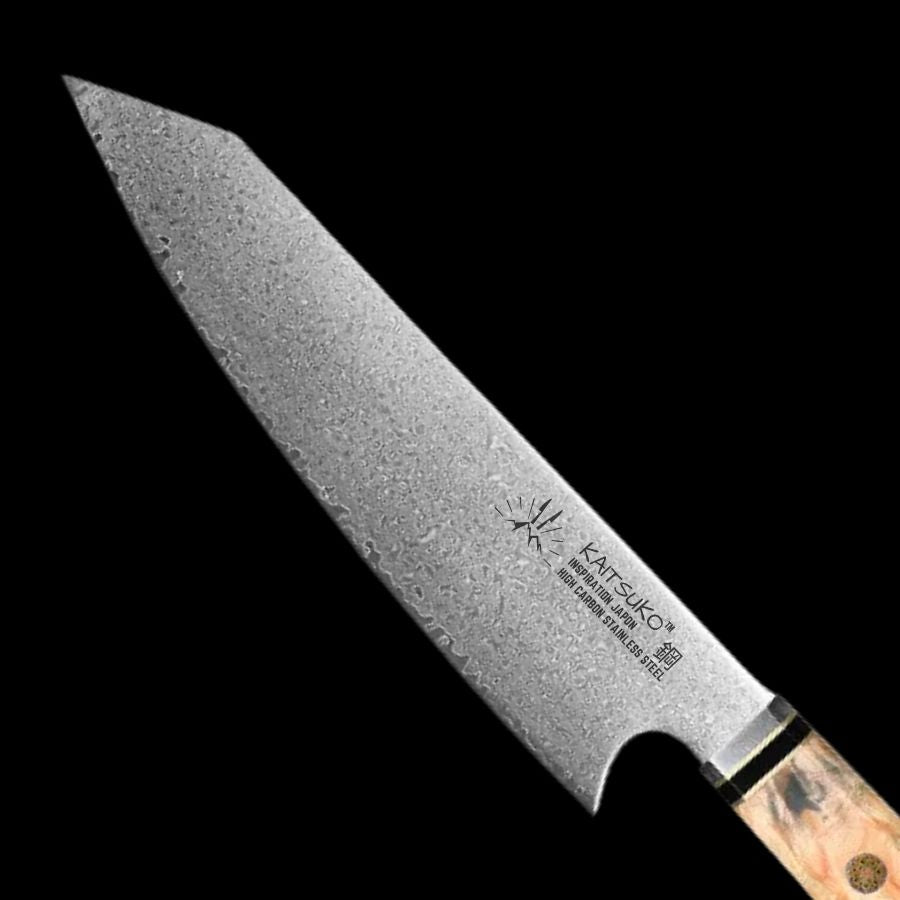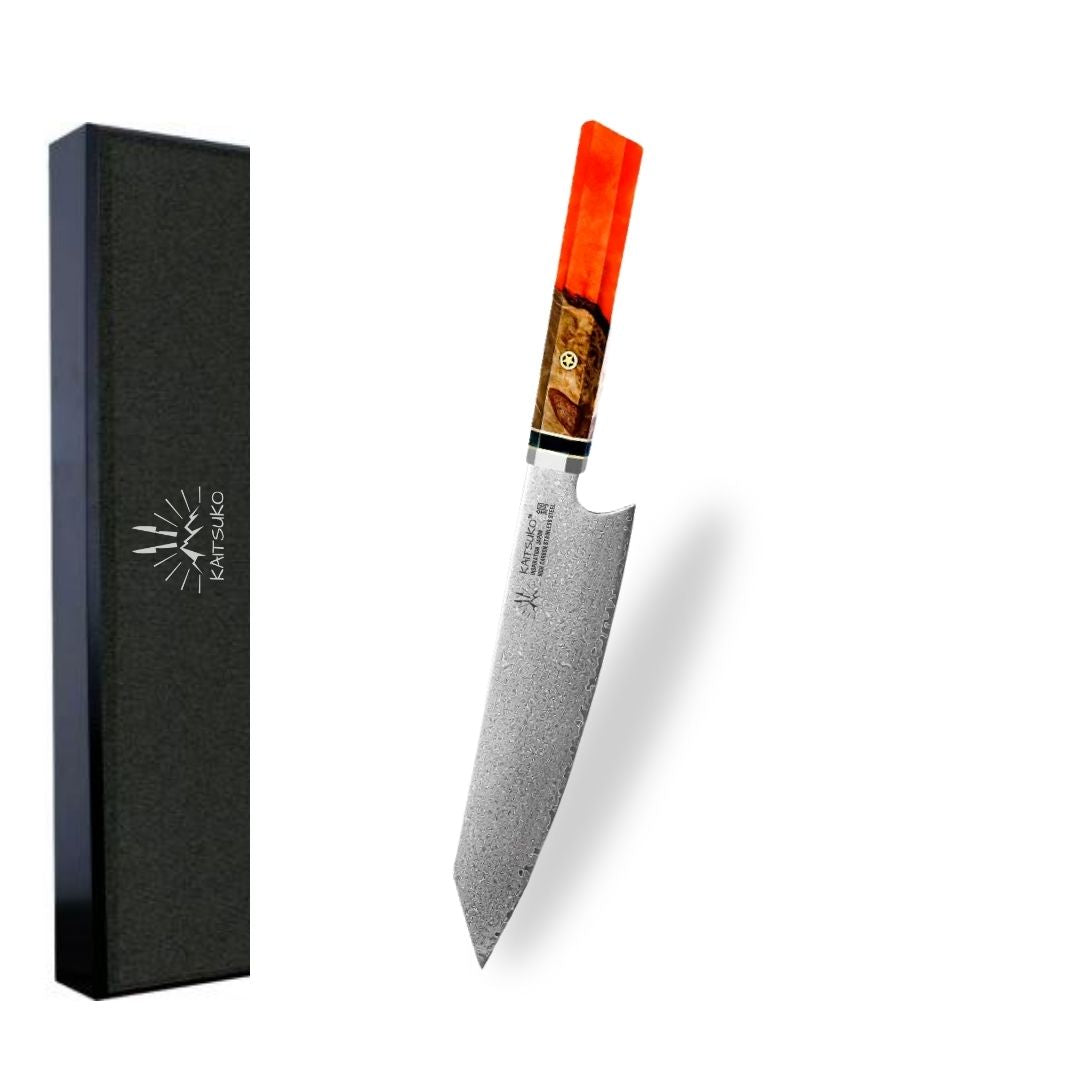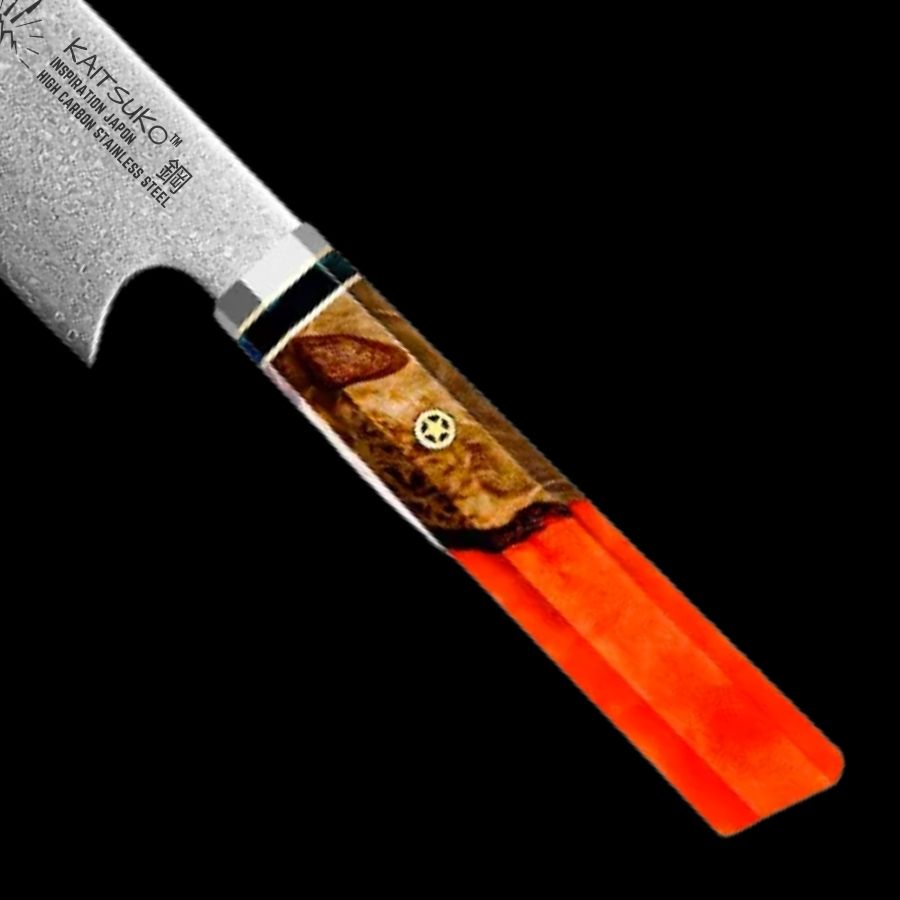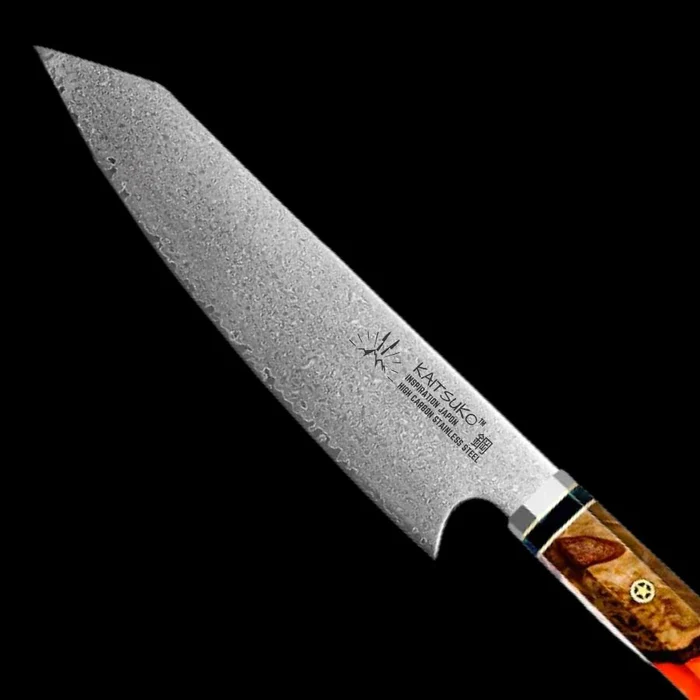Kiritsuke knives are true masterpieces of Japanese cutlery, which is why they are prized by both professional chefs and individuals who are simply passionate about cooking.
Their design is directly thought out to combine precision and versatility , which makes Kiritsuke knives a particularly versatile tool for all kinds of tasks, such as cutting vegetables, fish or meat.
The Kiritsuke is therefore not only a symbol of Japanese culinary mastery, but also a strategic choice for cooks looking for a single knife that can do it all. Here's everything you need to know about it!
What is a Kiritsuke knife?
Origin and history of the Kiritsuke knife
The Kiritsuke knife is directly born from the Japanese culinary tradition , and its fame is mainly due to its long, tapered blade with a straight tip . Thanks to this, it combines the functions of two other traditional Japanese knives: the Yanagiba , used for finely slicing fish, and the Usuba , intended for the precise cutting of vegetables.
Historically, the Kiritsuke was a status symbol reserved for the most experienced chefs, due to the technical skill required to wield it properly.
Over time, this prestigious knife has evolved and been adopted in modern kitchens around the world, so much so that today, the Kiritsuke is appreciated not only for its versatility , but also for its unique design ensuring great precision and a clean cut.
In other words, Kiritsuke fits perfectly into contemporary cuisine .
Features of the Japanese Kiritsuke knife
The Japanese Kiritsuke knife stands out for certain key features that make it a particularly popular tool in the culinary world in general.
You should know that its shape and design are unique , particularly in view of its following advantages:
Long, tapered blade: Typically measuring between 8.25 and 12 inches, the blade offers great versatility for fine, precise cuts, as well as more robust tasks like slicing and chopping;
Distinct angled tip: The straight or slightly curved tip allows for maximum precision, ideal for delicate kitchen work;
Minimalist aesthetics: The Kiritsuke's simple and elegant design reflects the quintessential Japanese tradition , offering you a tool that is as beautiful as it is effective.
The high quality materials used for its design are not left out:
Damascus Steel : Known for its exceptional corrosion resistance and distinctive aesthetic patterns, Damascus steel is composed of multiple layers of steel forged together, ensuring durability and lasting sharpness;
Carbon steel: Favored for its ability to maintain an exceptional sharpness, carbon steel requires regular maintenance to prevent rust, but offers unmatched cutting performance;
Premium stainless steel: This material offers an excellent compromise between ease of maintenance and performance, resisting corrosion while maintaining excellent cutting capacity.
The bottom line is that the Kiritsuke is designed to excel at a wide range of tasks , from finely chopping vegetables to slicing fish to preparing meats.
At Kaitsuko, our goal is above all to help you find the best kitchen knife through our range of high-quality Japanese knives!
Benefits of Using a Kiritsuke Knife
Versatility in the kitchen
The first advantage of the Kiritsuke knife is undeniably its exceptional versatility in the kitchen, the latter being capable of slicing, cutting and chopping with unparalleled precision.
Unlike other Japanese knives like the Bunka, which is excellent for general tasks but limited by its size and shape, the Kiritsuke combines the features of several specialty knives, including the Yanagiba for fish and the Usuba for vegetables.
Result: this makes it a unique tool that can replace several knives in a kitchen, guaranteeing you optimal efficiency and remarkable flexibility , including for your most complex preparations.
FOR MAXIMUM VERSATILITY, BE SURE TO TAKE A LOOK AT OUR KOMODO COLLECTION
Precision and efficiency
The Kiritsuke also stands out for its sharpness , which gives you high cutting precision, allowing you to make fine, regular cuts with disconcerting ease.
Its blade , forged from high-quality materials such as Damascus steel or carbon steel , ensures remarkable durability and resistance, allowing it to maintain its sharpness over a long period, even with intensive use.
DISCOVER OUR CHEF TANAKA OCEAN BLUE COLLECTION
Kiritsuke knife: use and maintenance
How to use Kiritsuke?
To properly use a Kiritsuke knife requires some mastery of cutting techniques.
It is true that thanks to its long blade and sharp edge, it is ideal for making clean and precise cuts, whether it is thinly slicing fish, cutting vegetables into julienne strips, or chopping herbs fluidly. To use it properly, it is therefore essential to adopt a firm but flexible grip , placing your fingers on the handle and exerting light pressure on the blade to guide the cuts.
Then, when using, remember to maintain a stable posture while using a quality cutting board to avoid slipping. The Kiritsuke's angular tip can thus be used for delicate cuts, but it requires special attention to prevent accidents.
Maintenance and sharpening
Here are some simple but very effective tips to extend the life of your Kiritsuke knife:
Clean it after each use: Hand wash your Kiritsuke immediately after each use with warm water and a mild detergent. Avoid the dishwasher at all costs , as high temperatures and abrasive detergents can damage the blade;
Dry thoroughly: After washing, carefully wipe the blade with a soft, dry cloth. Never leave water or moisture on the blade, as this could cause stains or rust, especially on carbon steel models;
Choose proper storage: Store your Kiritsuke in a safe place, preferably in a knife block, a wooden sheath (saya), or on a magnetic stand. The idea is not to leave it lying around in a drawer where the blade could be damaged by other utensils;
Remember to sharpen regularly: To maintain an optimal sharpness, sharpen your Kiritsuke regularly using a Japanese whetstone. Start with a coarse grit to reform the blade's edge, then move to a finer grit for precision sharpening. Using a waterstone also helps preserve the integrity of the blade and ensures a long-lasting sharpness;
Precautions when sharpening: Follow the manufacturer's recommended sharpening angle, usually around 15 degrees for Japanese knives, and above all maintain a constant angle throughout the process to avoid damaging the blade;
Don't forget occasional lubrication: Finally, for carbon steel models, regularly apply a thin layer of mineral oil to the blade to protect the steel from moisture and prevent rust!






